The Grand Dame As You’ve Never Seen Her
How To ‘Do’ Life With
Chronic Illness



“I Care, Therefore I Am” by Dr Amo Raju
ASDAN courses give SEND students the confidence to take control of their own lives.
ASDAN is an education charity and awarding organisation providing courses, accredited curriculum programmes and regulated qualifications to engage, elevate and empower young people aged 11 to 25 years with diverse needs.
My Independence is ASDAN’s innovative suite of four programmes designed to develop a breadth of positive life outcomes for learners working at pre-Entry to Entry level 3.
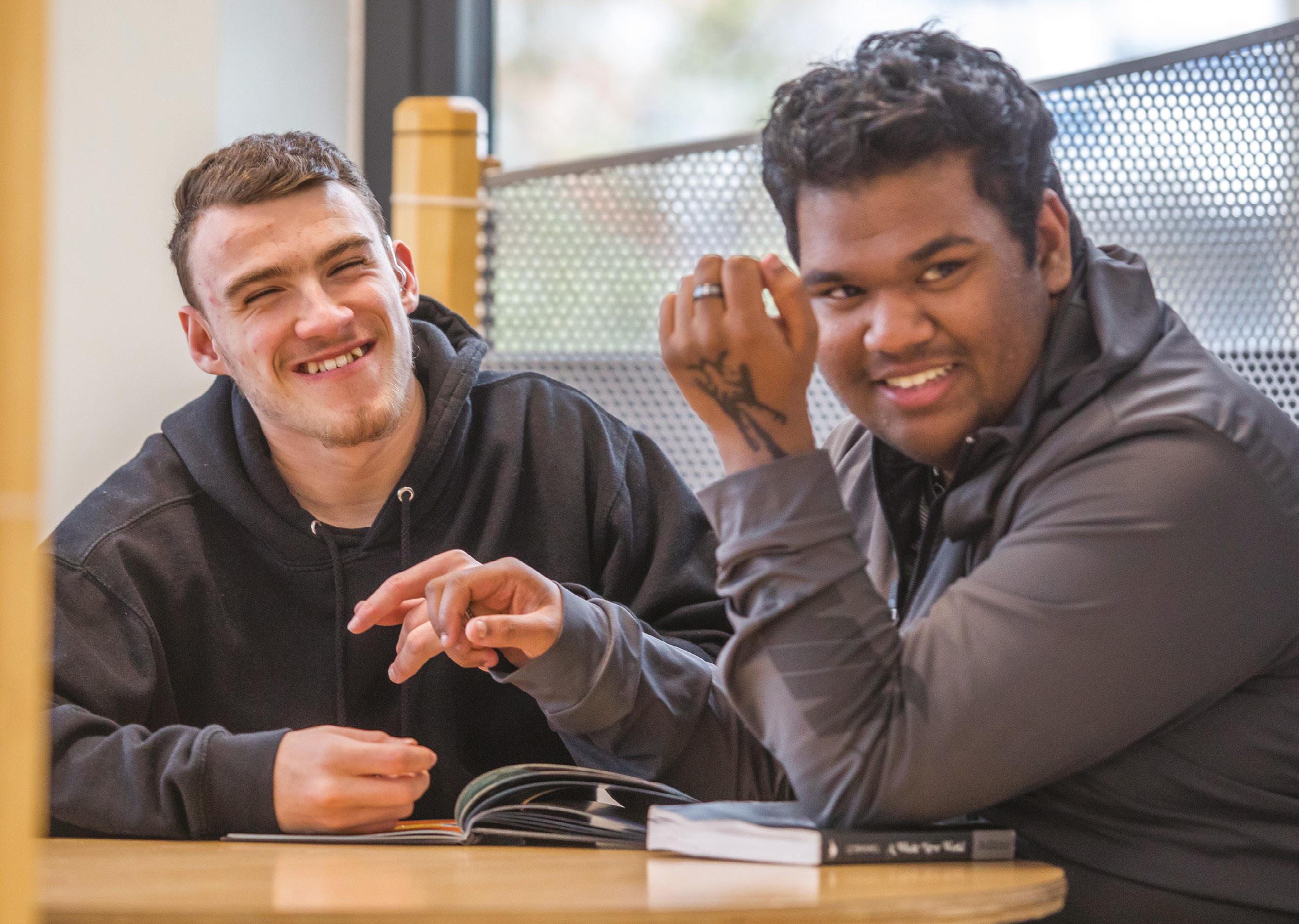

Each programme is designed to raise and support the aspirations of young people with moderate or severe learning difficulties, with one programme developed specifically to build the confidence of learners with profound and multiple learning disabilities.
Mapped to the four Preparing for Adulthood pathways – friends, relationships and community; employment; good health; independent living – My Independence helps learners achieve and evidence the outcomes stated in their education, health and care plans, building on our successful and popular Preparing for Adulthood programmes.
Co-designed with practitioners, My Independence fosters the personal, social and work-related abilities of learners by focusing on a person-centred planning approach. ASDAN offers creative, adaptable resources and training to support educators in delivering the programmes within an existing or new curriculum tailored to learners’ needs.
My Independence ensures young people with SEND develop the broad range of skills needed to transition successfully into adulthood.
Find out more:
asdan.org.uk/my-independence



8 DRM Podcast
Disability Review Magazine is going into the world of podcasts!
9 Newsbeat
All the disability media you should be consuming right now
EMPLOYMENT AND EDUCATION
12 Inside The SEN Crisis DRM talks to the S.E.N.D Reform England campaign
18 I Care Therefore I Am Dr Amo Raju writes on his thoughts about gratitude & care giving
20 Miriam Margolyes…. As you’ve never seen her before
The grand dame speaks to us from her home in Italy


28 The Making of Chronically Brown Suhkjeen Kaur talks us through how to platform important conversations on disability & culture
32 Behind The Scenes Of Neowalk Businesswoman Lyndsay Watterson talks about her colourful cane business
37 What is the social model of disability? Each issue we myth bust disability terminology’
TRAVEL & LEISURE
38 Adventures On The Sleeper Train by Carole Edrich
An eye opening look into the difficulties of travelling while disabled
42 Why Pacing Is Important by Amy Arthur

58
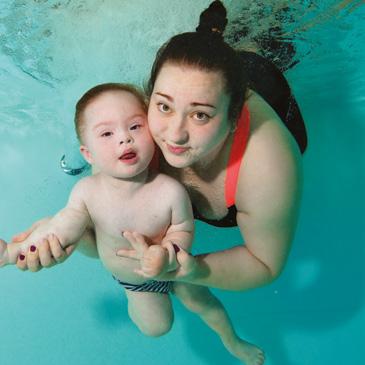
Author & journalist Amy Arthur deconstructs the concept of pacing
46 Why Adaptive Fashion Matters
A deep dive into the new movement now appearing on the catwalk
52 How To ‘Do’ Life With A Chronic Illness
Pippa Stacey chats to DRM about her new book

56
58 How
59
60

12

62
The
Executive Editor: Lee Gatland
Art Director: Richard Hejsak
Managing Editor: Lydia Wilkins lydia@sevenstarmedia.co.uk
Sales Team: 01959 543 650 sales@sevenstarmedia.co.uk
Published by SEVEN STAR MEDIA LTD
184 Main Road, Biggin Hill, Westerham, Kent Tel: 01959 543659 disabilityreviewmagazine.co.uk

COVER CREDITS: Jennifer Robertson - Kyte Photography
Disclaimer: Disability Review Magazine
(DRM) is published three times per annum by Seven Star Media Ltd. No part of DRM may be reproduced, stored in a retrieval system or transmitted to any form without permission. Views expressed in the magazine are not necessarily those of Seven Star Media Ltd, and are included to provide advice only. No content is a substitute for professional medical advice. During printing, images may be subject to a 15% variation. © Copyright of content belongs to individual contributors with the magazine copyright belonging to Seven Star Media. All rights reserved. Please either keep this magazine for future reference, pass it on for somebody else to read, or recycle it.
 Credit: Debb Burrows
Credit: Debb Burrows
You probably noticed that a few things look a little different around here - from some design changes, to the specific content of this issue. My name is Lydia Wilkins, and I’m an award winning freelance journalist who specialises in disability and social inequality issues. I’m also an author, a speaker - and occasionally a teacher, of sorts, too. From this issue onwards, I will be taking over as the editor of this magazine.
This issue has the theme of ‘beginning’ for this reason - especially because this is so reflective of disability as a concept, too. The social model of disability suggests that it is barriers in society that ‘disable’ the individual - and that it is those barriers that are the problem. And that they are the ‘thing’ that needs fixing instead. Disability is a multi faceted concept - but rather than speaking to it as a tragedy, something to pity, we can and should do better. We can begin by starting to educate ourselves - such as by reading up about the disability justice movement, watching programmes such as the brilliant Then Barbara Met Alan, and so much more. You cannot start a journey unless you decide to take the first beginning step, after all. Disability is across age, race, gender. And we have a job to reflect such a nuance, and to
give air time to the range of lived experiences. We also have a job to do in not creating ‘inspiration porn’ - a disabled person is allowed to, well, just be, instead of being seen through a lens of either tragedy or triumph. That is not to say don’t celebrate individuals and their achievements - but it is to say to see this unique demographic of individuals with a wider frame. For this issue we have Miriam Margolyes as our cover star - someone who, at 82, became an instant disability icon among Gen Z individuals when Vogue interviewed her a year ago. She’s also passionate about the world around us, and how we can make it a better place. We also shine a light across a range of businesses, as well as the range of conditions - ranging from Dyslexia to FND, spinal stenosis to ME. This is not a group of people to be pitied, but to be celebrated.
Disability is across age, race, gender. And we have a job to reflect such a nuance, and to give air time to the range of lived experiences.
I myself am also disabled. I am Autistichaving been diagnosed two months shy of turning 16. (Guess how old I am now! Points mean prizes…) I am also a Long Covid patient - meaning that I now have a set of acquired issues, ranging from Anxiety to Vestibular Migraine. That last one is not ‘just a headache’ - it profoundly impacts my balance and spacial awareness, and I use a cane to walk long distances and to stand. I also recently found out that I also probably have Dyspraxia - and a diagnosis is in the works, too
If this is the beginning of your disability journey, welcome - and I hope we will stay alongside you as a companion in the time to come.







Designed exclusively for disabled individuals and carers
xclusively for disabled and
Designed exclusively for disabled individuals and carers
Designed exclusively for disabled individuals and carers
wallet - no more bulky
Fits in your wallet - no more bulky documents
Fits in your wallet - no more bulky documents
Fits in your wallet - no more bulky documents
accepted nationwide as
for discounts,
Widely accepted nationwide as proof of eligibility for discounts, priority access and more
Widely accepted nationwide as proof of eligibility for discounts, priority access and more
Widely accepted nationwide as proof of eligibility for discounts, priority access and more
My
My
My




Advanced security features: hologram and special overlay
Advanced security features: hologram and special overlay
Advanced security features: hologram and special overlay
Advanced security features: hologram and special overlay
Same-day application decision
Same-day application decision
Same-day application decision
Same-day application decision
Emergency contact QR code
Emergency contact QR code
Emergency contact QR code
Emergency contact QR code
Plus premium colourful lanyards exclusively for cardholders
Plus premium colourful lanyards exclusively for cardholders
Plus premium colourful lanyards exclusively for cardholders
Plus premium colourful lanyards exclusively for cardholders
Marilyn





By the time you read the next issue of Disability Review Magazine, we will have launched our very own podcast! And here’s what to expect…
Podcasting has been ‘all the rage’ for a long time now, and only seems to be growing. Just last year, they were the type of media experts predicted would be consumed more often in that year alone. Be it true crime podcasts or about the latest dissection of therapy sessions with a bestie - hello, Elizabeth Day - here at Disability Review Magazine, we thought it was time for something a little bit different. And we wanted to throw our hat into the podcasting ring, of course.
Disability is a multi faceted concept, and one that needs to be spoken about morewith nuance. It’s another part of the human experience, and yet some subjects are just never broached. For example, what is it like
to travel when you use a wheelchair - how does it feel to be met with access barriers when you just want to enjoy a holiday outside the country? What is the knock on impact? And what can we do to change things? Why is adaptive fashion important, why does it matter? Can we be frivolous? What should we known?
Our next issue concerns the world of travel - and we will be looking to unpick and untangle a multiplicity of issues. But we will also be launching a podcast.
The podcast will run for 6 weeks of a series at a time, between the future issues of Disability Review Magazine. There will be a range of diverse guests, all ready and waiting to have a nuanced conversation about disability, what it means to them, and what we can do to change the inaccessible world around us. These conversations will also include our cover stars, as well as a line up of others.
Now is the time to move beyond conversations of ‘awareness’because disability is readily acknowledged in society, yet all the while the same issues still apply. Rather than discussing awareness - to raise an awareness of an issue - we need to move into the realm of what we can do about an issue, what our rights are, and what we as individuals need to know.
Disability is not something to be ashamed of. It is not a tragedy, it is not an inspirationthere is a nuance of the in-between.
In this podcast there will be longer length conversations, delving in to more topics - and we hope that you, our readers, will listen in. The podcast will be freely available, and there will be more information as to how to listen in our next issue in June.

You may have noticed that the ‘Newsbeat’ section looks a little bit different; we want to tell you all about the excellent disability media that is out now, as well as being up for release. Be it a memoir or a cookbook, events or conferences that you can book tickets too, now is the most wonderful time of releases across a range of materials. All of these releases have been created by disabled individuals.

TELEVISION:
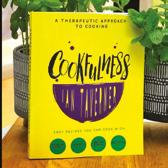
BOOKS:
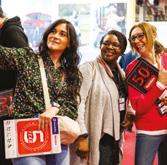
EVENTS:
Channel 4 has set up a series to look at the workings of Zebedee Talent, the model agency that specialises in disability representation. The models on its client rooster have been seen on the cover of Vogue, campaigns for well known beauty brands, and others.
Cookfullness by Ian Taverner. An easy to use cooking guide on how to open up your kitchen when you have a disability, everyone should have this book on their kitchen shelf. Ruby Hastings Writes Her Own Story by Rachel Charlton Dailey. A groundbreaking fictional book for children on what life can be like with Dyspraxia.
Naidex is the biggest annual disability conference in the UK that takes place each March. By the time you read this magazine, Naidex will have taken place on March 20th - 21st, with a range of seminars, talks, demonstrations, & stalls where you can purchase all of your mobility equipment and other aides.

TELEVISION:
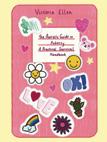
BOOKS:

EVENTS:
A Kind Of Spark was lauded for its representation of Autistic teenage girls and women when the first series was initially broadcast - and there is a second series that is in fact on the way. A fictional universe set in the world of Juniper, with overlapping themes of witchcraft, what happens next?

CLOTHING:

PODCASTS:

OTHER RELEASES:

CLOTHING:
The Autistic Guide To Puberty by Victoria Ellen is a self published book by an Autistic PHD student, that is due for release soon.

BOOKS:
Oh, Miriam! Is a live tour by Miriam Margolyes, after her book of the same name, that takes place throughout July. Cooking Beyond The Spectrum is a cookery course that will be run in Lewes from April to support parents of Neurodivergent children. Laughing Boy, an adaptation of Justice For Laughing Boy, makes its stage debut from April 25th.

PODCASTS:
Adaptive fashion - as in, fashion that is disability inclusive - has grown in prominence in recent years, thanks to brands such as Unhidden, BraEasy and Dewey. Now, Primark has gotten involved - with a range of adapted lingerie. It fits a wide range of disability access needs, too.
How To Fail With Elizabeth Day is back - and it has an all new, slightly glossy look about it. While the podcast looks at failure and how we can learn from it, it should also be noted that disability has also been discussed with nuance - such as with the appearance of our current cover star, Miriam Margolyes.
While not strictly related to the topic of disability, the actress and disability advocate Selma Blair, who documented some of her health battles and procedures related to MS in a documentary named after herself, is currently co-starring in Pandora’s new new #BeLove jewellery campaign.
London Fashion Week will be happening in September this year - and there is sure to be a range of new designs in the realm of adaptive fashion that will be showing, before moving into the high street.
Disability Intimacy, edited by Alice Wong, is the much anticipated follow up to the seismic book, Disability Visibility. Wong is also the author of Year Of The Tiger: An Activist’s Life. - 30th April 2024.
Keep an eye out - Disability Review Magazine is going into the world of podcasts! All the details around our new and upcoming podcast will be in the next issue in June, which is centred all around the world of travel and the issue of accessabillity when we all go out and about.

At BT, we believe that everyone deserves to communicate. Many of our customers rely on their landlines to connect with loved ones and complete important everyday tasks. However, when problems arise, not all methods of communication may be easily accessible to all, leading to frustration and unneeded stress. This
is why at BT we focus on personalised one-to-one service. Viewing accessibility as a fluid, ongoing process is not just a facet of our business, it is our business, from the ground up. With our “Here For You” campaign we’re putting technology and compassion hand in hand to foster a more supportive environment for those with hearing loss, communication needs, different financial circumstances and more.


We’re constantly trying to revolutionise our approach to inclusivity, from adaptive devices and teaching new digital skills to helping you get the best value for your budget. We want you to get the best out of your services with us, so knowing about your circumstances helps us work with and for you. Here’s just a few examples of what you can expect from us:

12,000 staff trained in empathy, compassion, and access needs ready to help you both in store and online
Financial support such as BT Home Essentials for lowcost broadband and phone plans
Personalised suggestions for new technology, products, and services to help you with everyday communication
At BT, we believe that everyone deserves to be heard, understood, and valued. We want to empower everyone to lead independent, fulfilling lives. Let us know if you have any additional needs that we should be aware of so we can provide you with the support you need. We can help you with communication needs and support you with account management if you experience a significant life event, such as losing a loved one, or living with an illness. Share your circumstances via your online MyBT account or let one of our service agents know the next time you call us. You can also visit the Here For You website to find out more information on what we can do for you, one connection at a time.
At BT, we believe that everyone deserves to communicate. Many of our customers rely on their landlines to connect with loved ones and complete important everyday tasks.
Relay UK, a unique app that allows those who are deaf, hard-of-hearing and speech-impaired to relay information on phone calls using the national relay service, as well as send free SMS texts to connect with emergency services if needed
Support with digital skills in partnership with AbilityNet, so everyone can get to grips with the increasingly important online world
A British Sign Language (BSL) video calling service with fully registered BSL interpreters that have at least five years of community interpreting experience
For more information, visit bt.com/help/ here-for-you/



If you read the news regularly, you’ll be aware of the recurring story of a crisis in the world of Special Educational Needs provision. We spoke to one of the members of the S.E.N.D Reform England campaign to find out more.

Qto, so next we started working on a series of local protests covering the length of the country culminating in 13 coordinated protests on October 13th [2023] to illustrate the scale of the issue.
Meanwhile behind the scenes we had already begun organising our own first parliamentary event - called a drop in to engage with MPs and begun to build relationships to effect real meaningful change. That happened on January 16th this year - we were told that it was one of the most well attended drop-ins Parliament had ever seen.
We are talking about desperate families here, we are not desperate to secure a ‘golden ticket’, we are desperate to secure the bare minimum, a basic education for our children.
Can you talk to me a little bit about how the campaign was set up, and what it aims to achieve?
A group of us - all SEND parents that had been fighting our own personal battles with regards to the broken systems knew one another via social media - we came together to form SEND REFORM ENGLAND after a video of Kent councillors was shared on social media. This was a pivotal moment - the mood of SEND families all over the country was exactly the same as ours, we had to do something.
So we took to social media, our campaigning tool of choice to organise a protest in London outside the Houses of Parliament. It was very emotional, approximately 1000 families travelled miles to attend alongside Clive Lewis MP who added his support to the SEND REFORM campaign. It quickly became clear that there was a hunger for many more families to add their previously unheard voices
This is just the very beginning - there are many more recommendations we are working on at a local and school level but when we are talking about government policy - these are the key areas.
I do worry that we make what we are doing look easy. It is not. We have all had to make personal sacrifices to do this work, this is why we need to succeed, our sacrifices and those of our children cannot be in vain. At the core of our campaign are 12 working class mums all volunteering our time and skills at SEND REFORM ENGLAND and we could not do the work that we do without our wider team, more mums just like us, also volunteering to push for the changes our children so desperately need. For decades SEND families have felt isolated and ignored and our children have been failed on a catastrophic scale.


I think there is a huge amount of resistance to cater for special educational needs as standard, kind of why should those children receive different treatment?
QWhat are the fundamental causes of the current crisis in SEN provision?
Parent/caregivers and their children are not being listened to and the current education system is based on an ableist ‘fail first’ culture that is traumatising not only our children, but entire family units. Mainstream schools are underfunded & overcrowded and there is little to no training in special educational needs. A sentence we are hearing more and more from schools when they do not want to take a child with special educational needs is that they cannot meet the child’s needs and that is that - there is suddenly no school place for that child with or without an EHCP.
[Editor’s note: this document sets out the needs and adjustments for a child in an educational setting that must be adhered to, to support them.]
Local authorities all across the country are breaking the law with the EHCP process. Families are reporting being told by schools that
their children will not be granted an EHCP and refusing to apply for one, they are being told by schools that they need a year’s worth of evidence in a new setting before they can apply, so families are taking matters into their own hands and applying for these legal documents themselves. The vast majority of these applications by families are being declined and so families are taking the LA’s to court, imagine doing that for fun?! We are talking about desperate families here, we are not desperate to secure ‘a golden ticket’, we are desperate to secure the bare minimum, a basic education for our children. Then we simply do not have enough specialist schools, meaning that children are often having to travel miles every single day. With every single one of these challenges and delays in accessing help - our children’s needs become greater - if the early intervention we keep hearing about - that currently does not exist - were implemented it would mean many children would never even need an EHCP.
QWhy is it that we see so many organisations effectively taking umbrage when parents ask for provisions they are entitled to - and they spend so much to combat a battle they will come to loose?
I think there is a huge amount of resistance to cater for special educational needs as standard, kind of why should those children receive different treatment?, which is wild because in actual fact, research has proven that if we teach all kids in a less ableist & fully inclusive way, they ALL THRIVE. The reforms we are asking for would benefit absolutely all children and society as a whole.
Q Is this perhaps backdropped by a government/society that is potentially intolerant, do you think? SEN ECHPs were described as a ‘golden ticket’ recently.. I mean, EHCP’s are more a golden goose than a golden ticket. No family would put themselves through this stressful, gruelling process unless absolutely necessary. I think once we have an even greater understanding of the stats we will actually discover a large percentage of families give up on doing so because it is simply too much to handle on top of an already more challenging life. It is a sad fact of life we do still live in a judgemental society where a certain demographic are either scared of what they don’t understand, don’t care about what doesn’t affect them, and think that disabilities are a made up thing. On the flip side though, having hosted our own event in parliament there are a lot of MPs that really do care that are already pushing for the changes we need.

Parent/caregivers and their children are not being listened to and the current education system is based on an ableist ‘fail first’ culture.
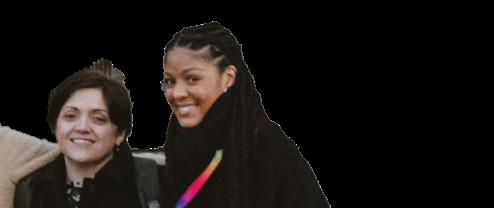


Most children have spent half if not all of their young lives on some sort of waiting list.
Q If the provisions are in place, what is the knock on impact?
This is the good news! The positive chain reaction of provisions being in place are huge and far reaching. Our children will be able to unlock their potential, better mental health, shorter waiting lists…
Q What’s the reality of having to battle to get this in place?
Years of our lives we will never get back. Most children have spent half if not all of their young lives on some sort of waiting list. There is a lot of talk of early intervention but in my experience it doesn’t exist. All the time our children are waiting, their needs are becoming greater, so then the cost of the support they require when they are finally seen and heard is of course greater too. Parent/caregivers entire lives are upended, we are often unable to work because fighting the systems to get the support we need for our kids is a full time job in itself. It is not a realistic long term strategy - it is horrific, we have all at some point during our journey’s been broken, a very high percentage of us have experienced mental breakdowns and our children have burnt out. Some families kids haven’t made it and have taken their own lives.
Here are 4 ways to support the S.E.N.D Reform England campaign:
1 Follow @sendreformengland on instagram and TikTok. Sharing information on social media is a cost-free action that everyone can take.
2 Volunteering where you are able is an amazing thing to do for both the organisation you volunteer with and for you.
3 Writing to your MP’s. This can assist to affect change; most MP’s hold a local surgery in their constituency to give people the opportunity to meet with them and discuss matters of concern. This is an integral part of the grass roots campaigning at SEND REFORM ENGLAND. This can be the extra nudge needed for MPs to take up the issue of SEND REFORM on behalf of their constituents.
4 Buy The Journey Into SEND Motherhood. All proceeds go to funding any expenses involved with SEND REFORM ENGLAND campaigning work. It is spent on pushing for change and we are so grateful to every single person that has purchased it so far.

WWT Slimbridge is a multi-award-winning visitor attraction and wildlife reserve, leading the way as one of the most accessible and inclusive attractions in Gloucestershire.
Get up close to the world’s rarest goose, spot a flamboyance of flamingos or meet marvellous mammals including otters and water voles.
Gold Accessible & Inclusive Tourism Award winners, WWT Slimbridge, has its own Changing Places Toilet,
mobility scooters and wheelchairs for hire, sensory experiences and accessible pathways throughout.
Nature connection for all is WWT Slimbridge’s priority, making sure everyone has a memorable day out in their wetland paradise.




‘I CARE THEREFORE I AM’
Dr Amo Raju is the CEO of Disability Direct & the author of Walk Like A Man. In this guest column, he writes of gratitude we all need for caring and giving assistance.
Carers, whether familial or professional, embark on a journey entwined with love, dedication, and sacrifice. Their days are punctuated by tender moments of care and companionship, juxtaposed with the stark reality of inevitable farewells. Yet, amidst the turmoil of grief, they stand as pillars of strength, providing solace and support to those they care for while grappling with their own emotional upheavals.
The bond between carer and recipient transcends the conventional boundaries of duty; it is forged in the crucible of shared experiences and unwavering empathy. As carers navigate the complexities of grief, they confront a myriad of emotions - from profound sadness to bittersweet reminiscence, from exhaustion to resilience. Their journey is marked by the relentless pursuit of comfort and dignity for their loved ones, even in the face of adversity.
And amidst such a pursuit, a carer almost becomes invisible as a person who once had a character of their own and now a shadow of the cared for. What’s more incredible is their extreme commitment in joining the fight for justice for disabled people and perhaps unknowingly suppressing the argument for carers rights. With over five million unpaid carers in the UK (2021 Census), there is a growing need for disabled people and society as a whole to recognise the heart-breaking strenuous journey they take alongside us and long after we’ve gone too.
chaotic bloody battlefield, an army medic, accompanied by a journalist, scans ahead determining a plan of action. He looks ahead and within seconds he enters an arena of blood, limbs and organs. The journalist is keen to write up a firsthand account from the viewpoint of someone able to save rather than take lives. Yet he is soon baffled by the medic’s actions who runs past several wounded soldiers, each crying if not begging for assistance. After three or four missed opportunities to tend to these poor souls, the journalist puts away his notepad and decides to help a few soldiers himself. Within a minute or two he soon realises he can no longer see the medic but carries on with his own new mission.
Their journey is marked by the relentless pursuit of comfort and dignity for their loved ones, even in the face of adversity.
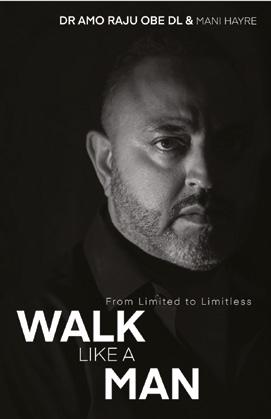
However, the toll of caregiving is not solely measured in physical exertion but also in the silent burden of emotional anguish. Carers often find themselves grappling with feelings of guilt, inadequacy, and overwhelming sorrow as they witness the gradual decline of their loved ones. The weight of anticipatory grief looms heavy, casting a shadow over their everyday lives as they confront the inevitability of loss.
Despite the profound challenges they face, carers embody the essence of compassion and selflessness. Their unwavering dedication serves as a beacon of hope amidst the darkness of grief, illuminating the path towards healing and acceptance. Through their acts of kindness and resilience, they remind us of the inherent beauty of the human spirit and the transformative power of love.
‘One morning during the great war, on some
On returning to basecamp he cannot help but feel the need to question the by now, exhausted medic. ‘’I don’t understand! Where in your training does it say to not save the lives of people clearly dying right there in front of you?’’
The medic replies with his own question. ‘’How many soldiers were you able to assist?’’ With a slightly smug reply – ‘Three! I reckon I saved three lives.’’
The medic smiled and congratulated him on his efforts. ‘’That really is good news. Thanks for your help. I suppose you were able to stop and help because you heard their pain. And that’s a natural response. But the unconventional yet correct approach to that arena which we both entered would be to apply our energies to those lying in silence. My ears are accustomed to hearing their quiet suffering. They don’t scream and shout for pain but are in equal need for attention. I saved over twelve people today. Not one cried out for support.’’
As I said, this story had a profound effect on me and has diverted my own attention to the plight of unpaid carers.
To give our energy and attention to others whilst we lose ourselves to the cause is one of the greatest examples of selflessness. Let’s all remember that our anger, frustration and hurt as disabled people is totally justified but we must ensure those who chose to stand by our side must be appreciated at all times.
AUTHOR: Dr. Amo RajuTWITTER: @AmoSinghRaju
INSTAGRAM: @amorajuofficial
TIKTOK: @amorajuofficial

Known for her outspoken nature, Miriam Margolyes OBE is no stranger to controversy. From her home in Italy, she talked to the editor of Disability Review Magazine about her next role alongside icon Judy Davis, becoming a disability icon, starring as Doctor Who villain The Meep, and more.
Oscillating between the childishly whimsical and the seriousnesses of the adult world, Miriam Margolyes is something of a contemporary shapeshifter. The grand dame thespian of the screen, stage and sound, 82, is known for roles such as Mrs Mingott in The Age Of Innocence, Sister Mildred in Call The Midwife, and Professor Sprout in the Harry Potter franchise. She is also an author of two volumes of memoirs, This Much Is True and Oh Miriam!, the latter a play-on-words of a familiar refrain throughout her life when admonished for failing to conform. Oh, Miriam! has since been adapted to a stage show which Margolyes will be performing as part of a tour throughout the UK later this Summer. For all the hubris that surrounds a 30 second soundbite, she is perhaps more
She’s one of the greatest actresses of the world.
Miriam Margolyes on working with Judy Davis
profound and compassionate in her human insight than what overwrought, punitive headlines of outrage would suggest. She speaks to me from her home in Italy, where she has been completing voiceovers for an Australian documentary; her next stop is New Zealand, for a “small-ish” part in a “delightful” film about Nuns whose convent is being sought by developers. The film will also feature Judy Davis and Joanna Scanlon - and I am duly told to research both lead women to better acquaint myself with their work. Margolyes is a “great believer” in research, after all. Margolyes appeared on the cover of Vogue’s LGBTQIA+ issue last year - but it was a YouTube video that earned her an instant icon to the disabled community, especially among those considered to be members of Gen Z.





Vogue shoots ‘in the bag’ videos - where a celebrity shows the exotic array of objects they carry round. Margolyes’ candour around her disability access needs earned her instant favour from the moment of upload. Instead of her handbag holding obnoxiously sized bottles of giant perfume ostensibly said to be ‘travel worthy’, she had packed a spare set of knickers, a napkin to hold an onion, a radar access key, and limited beauty products instead of a myriad of self endorsed products.
She was recently diagnosed with spinal stenosis, a painful condition that primarily impacts the legs which can have an adverse affect on someone’s mobility: “So because I’m a new disabled person, I’m discovering all the time what I need and what is difficult. And I think the first thing is, there are always stairs everywhere. I didn’t
notice that when I wasn’t disabled, but everywhere you go, there are stairs.” A penchant for the dramatic sneaks in to highlight a serious point: “And as soon as you get stairs, you feel less secure, because I know and everybody else knows that if you fall, you die. Basically, a fall means you break your hip or you break your arm and you go to hospital, and you get COVID and you die.” A sheepish add on: “I mean, that’s my interpretation of what happens…” It’s worth mentioning that prior to the interview taking place, a miscommunication over timings across European countries had occurred - with a friendly advisory warning texted to the editor of DRM to mask up meanwhile beforehand, as ‘COVID STALKS THE LAND’. How did she not notice the uneven terrain beneath her feet, Margolyes laments, such as when out for long walks in nature? These are all the details she has since had to contend with.
She also takes time to consider clothing and its access issues each morning when getting dressed, owing to sometimes struggling to tie her
shoes or shimmy into a supportive bra. This also includes a need to change her underwear on a regular basis. “I think it’s absolutely crucial that people realise they [have] got to drink or they’ll damage their kidneys and that’s much more serious than having wet knickers” she states, matter-of-fact, noting she may need to change her underwear several times a day. Because, after all, when in ‘polite company’, “what are they gonna do?”
She also speaks to believing that the right bra is crucial across the disability spectrum, such as to support cancer patients and others who may also be experiencing mammery related issues. Adaptive fashion - as in, clothing that is designed to be inclusive of disabled individuals - has grown in recent year. Unhidden, the leading adaptive fashion brand, lead its second catwalk show in collaboration with Kurt Geiger for fashion week in September 2023; other brands such as BraEasy and Dewey have also risen in prominence since. Brands have cottoned on to what has been deemed the Purple Pound - a metric of how much disabled households could be spending. This is a demographic that is rapidly growing, owing in part to the continuing devastation that Covid 19 continues to leave in its wake - and is almost a quarter of the UK’s population. The current estimate is that this metric is worth £274 billion annually, but the disabled population are not spending as much, owing to the lack of accessabillity options to meet their needs. £2 billion is estimated to be lost every month additionally, by ignoring these fundamental access needs.
I strongly advise designers to get a short fat woman to come and test the car before they assign the seat belt position

As a good actress, a kind person, and eternally truthful.
Miriam Margolyes on how she would like to define her legacy
When it comes to travel however, access to support her needs is at the front of Margolyes’ mind. “I take enormous care always to check where is the nearest toilet, and I go to a restaurant, is the toilet on this floor, is there a disabled toilet?” Hotels receive the same inquiries, such as for the availability of walk in showers, in order to avoid steps as much as possible. She reflects further: “So, I watch myself with even more care than I did before, because I’ve always been fat. Fat people have got to be careful because they sweat or, you know, and people who don’t move much have got to be careful.”
Seatbelts also earn a moment of ire, something that has become important to Margolyes, who continues to split her time between the UK, Italy and New Zealand. Part of her work still rotates around the theme of travel in documentary format. It’s just nonsense because one size doesn’t fit all.” She points out that standardised measurements for cars are usually modelled on “6 foot white males” - and that does not work since “You’re dealing with four foot 10 fat old ladies, which is me.”
She continues: “I mean, it’s absurd and it’s also dangerous. So because it makes people not use seat belts and seat belts are essential. First of all, it’s legal to wear a seat belt [so] you have to. And also, it makes sense because it keeps you safe. But if you can’t fix one without asphyxiating yourself, it’s absurd.”
Behind the laughter lies something further beyond the need to perform for other people - something Margolyes freely admits to, in describing herself as having been brought into this universe to do, to be an actress. In her eighth decade she is still globetrotting with limited signs of slowing down, perhaps in part due to a career resurgence due to a now infamous appearance on The Graham Norton Show. Here is a woman incandescent with frustration at a cultural apathy across a division of collected causes over a life time - climate change, politics, multiple conflicts raging around the globe, the recent Post Office scandal, the ongoing saga of the Thalidomide scandal around the world still to this day. Wonder and a curiosity etches itself across her features as she
I’m always asked about giving advice to people. And I’m always troubled because the only life I’ve led is my own.

expresses her worry and a wish for the world to change.
Where does she find sanctuary in a world of intensely political conflicts and division among polarised party lines? “In our farmhouse” she states without hesitation, in reference to her partner of five and a half decades, Heather. Splitting her time between the UK, Italy and Australia, it is here that there is a reprieve from division - such as in taking time out from Brexit-divided Britain and other terrortries. “The fact that the president, ex-president Trump, is going to be the next president of America, is profoundly disgusting to me” she notes sadly.

In other interviews Margolyes has conducted, the question and semantics of age has featured predominately - as well as various explorations of where her need to shock, to perform, originates from. At 82 she may not slowing down or be thinking about retirement - yet she has spoken previously about how her book advance for her second memoir would be going towards care related costs. How To Fail, the podcast hosted by journalist and author Elizabeth


I think that the ideal is for everybody to have their full potential realised

Day, had gone viral for the candour of the episode - such as in discussing fertility and age. It begs and prompts the question: how would Margolyes like to be remembered? “As a good actress, a kind person, and eternally truthful.”
From there, she opens up to a profound train of thought, but in part takes aim at Boris Johnson’s premiership in Downing Street: “I think for me, in a way, [it is] the main change in our society. Because to have a prime minister, whom everybody acknowledges was a habitual and skilled liar, and still to vote for him, I don’t go down that path. I can’t quite credit it or understand it. Truth is essential.” She calls for a return of truth in a public forum, in suggesting we have been collectively tarnished culturally as a result. There is a light that burns brightly in wanting to see a better world emerge, in calling to hope and a belief in a better tomorrow. There is a profound sadness, too - and a worry about power. Be it the current Post Office
scandal brought to light by Mr Bates vs The Post Office or the state of the Metropolitan Police that remains in special measures following a litany of scandals, there is a greater awareness and a caring that is not necessarily obvious to begin. There is a greater depth to her thoughts than just considering events in passing, such as by a scroll on a news website every morning.
And advice for younger actresses of today? “I’m always asked about giving advice to people. And I’m always troubled because the only life I’ve led is my own. So the lessons I’ve learned pertain probably only to me.
But I would say, to observe the per-

formances, observe people, and have an inner confidence that nothing can dent. And if eventually you decide that probably you’re not put enough, be proud, anyway, be proud that you’ve found a truth about yourself.”
She continues: “It’s a question of balance, balance, confidence, and humility, and always work towards being better. As an actress person or as a person, both, both.”
Other journalists have asked Margolyes about ‘the need to be seen’but does she sometimes think or feel that older individuals are sometimes seen as being invisible in society? The enunciation of received proncounation works to disarm instantly, with unexpected results. “Of course. I absolutely agree with you, Lydia.
Absolutely. We are invisible because the thing is that if you’re not sexy, if nobody wants to go to bed with you, you don’t exist.” Speaking to her belief of patriarchy being the set precedent in society - she begins to hurtle into the obscene, using at least one expletive for male genitals to express her belief that it “rules everything” and her preference is for the inverse; it also begs the question as to whether she would consider herself to be a feminist. (Margolyes had previously criticised John Cleese for his alleged past conduct, which he denies), on the basis of her gender, while they were both in education - but this had generated shocked headlines at the outspoken verbalisation.
Does she think that the acting establishment has changed how the issue of ingrained - be it direct or indirect - sexism is dealt with? “I think there’s been a general change in the issue” she expresses, in believing women are not ‘shrinking violets’ any more - something she would have never have described herself as being - and that “I think things have changed for the better.” She is “glad of that”.
“I think that the ideal is for everybody to have their full potential realised. And for a long time, you know, for hundreds of years, probably women’s potential was simply not observed. It wasn’t, they weren’t according to any potential, there was no need for women to have potential, it was thought.” This has changed completely, says Margolyes - but there is still “work to be done”. She cites the example of the recent backlash surrounding the Spanish football team and the criticism of a kiss that was complained about when
broadcast, for not being consensual, and how this is still seemingly up for debate.
Of her recent appearance in Doctor Who as the Voiceover for The Meep, a cutesy and furry, squirrel like creature that crashes to Earth with a terrible secret, she speaks to her hope of continuing to voice the character. On the topic of disability being represented on screen, Margolyes states simply that “We’re people. Just like anyone else. With the same longings, disappointments, hopes, fears, probably more fears.” The 3 ‘special’ episodes broadcast at the tail end of 2023 had seen David Tennant reprise his role as the fourteenth Doctor in the long running franchise - but the episodes won additional praise for its disability inclusion. Ruth Madeley, who starred in the iconic Then Barbara Met Alan, formed a central part of the plot line - and there was ambulatory use of her wheelchair, too. Added to that, the infamous TARDIS has had an upgrade - in that it in now set to be wheelchair accessible for the first time. Tennant had regenerated into Ncuti Gatwa’s Doctor, with episodes to come later this year.
As the interview draws to a close, one question remains - is there anything Margolyes wishes to add? Sometimes interview subjects like to add on a further detail, or a reference - and can forget, after all. Every one of us comes to experience a nagging thought at the back of our mind, after all - and this is the ideal chance to speak to that.
Reflecting on this for a second, Margolyes wishes to emphasise that she is not always what people see her as - in being less naughty, more thoughtful and more
anxious. Then, an interesting admission - that this is a “caricature”. A journalist may try to create a story or write copy they have to file that is more “sparkly”but the reality of her as a person is said to be “not very interesting to read about”.
However, she states that it is important to live from a truth - not up to a caricature of creation seen through the lens of other people, that it is also not her responsibility to do so. “I’ve always felt an anxiety for people who are finding life tough” she said, referencing how her mother had had a stroke towards the end of the sixties.
She reflects further, by way of closing remarks: “Towards the end of my life, I have never been older, richer, or more popular, or more famous. You know, I’m doing very well, thank you. But this is coupled on the other side, you know, the balance is that I have never been more disabled. I have never found my actual physical life harder than it is at the moment. But my financial life, my professional life, my social life is extraordinarily fulfilled. So I am both very grateful, surprised, grateful - and irritated that it didn’t come sooner.” A charming smile to the Zoom camera, an agreement to speak on a personal basis one on one outside the interview context, and Margolyes is off again seemingly at the speed of light once amore. It only begs the question, as to what more is to come?
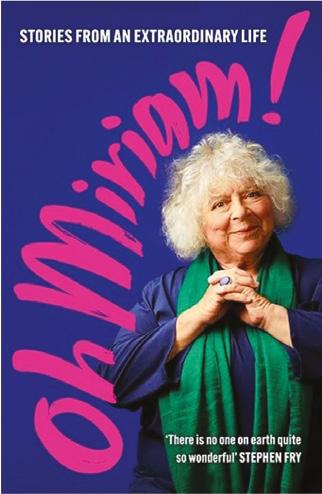
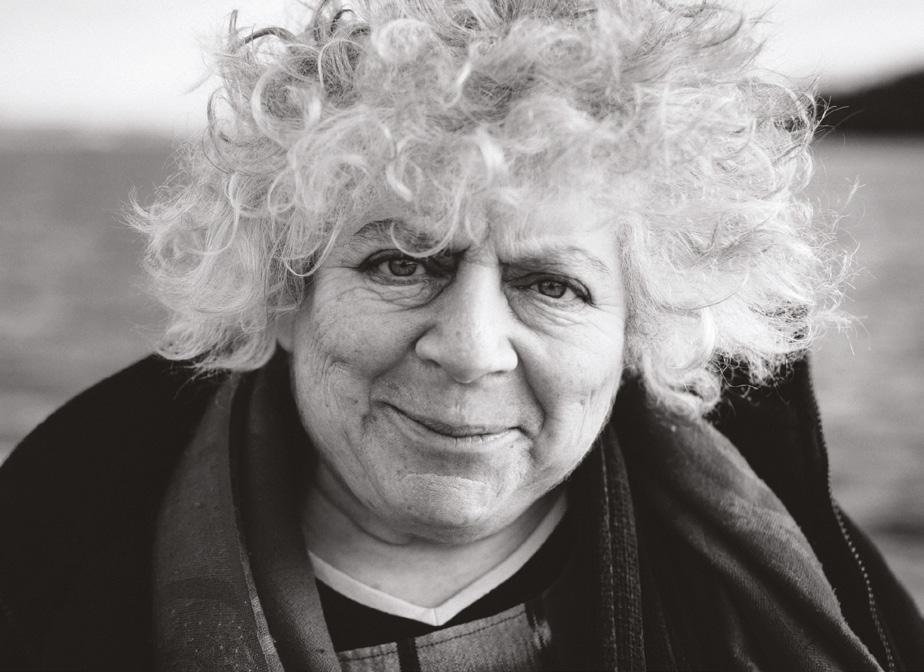



“WE’RE SO CLOSED OFF FROM THAT CONVERSATION WHICH ISN’T HELPING US.”
Chronically Brown is a non-profit organisation founded by Suhkjeen Kaur. It works to tackle the stigma of disability within the South Asian community. We caught up with Kaur to find out more.
QTalk to me about the impetus for Chronically Brown, how did that happen?
A: Chronically Brown came about with my own experiences of having an acquired disability and chronic pain for the first time, and trying to navigate, like, my own family around that and trying to get them to understand what it actually meant to me and how I had to adapt so much of my life around this new diagnosis. They didn’t fully grasp how different this would be for me and especially the emotional components of things and how like that affected me mentally.
There was so much left out of the conversations such as the practical elements of, oh, will she be able to get a job?, will she be able to… It was very much focused on like what I can contribute to society, I guess. It was viewed as a very big negative and because of that, I really wanted to reach out and. I wanted to get them to see on social media like what my day-to-day life was actually like, like if one day I wasn’t able to move at all or go to university and how I navigated that differently and it gave them a lot of realities but it also opened up a lot of other South Asians to come to me and say similar things that they were


experiencing actually. They weren’t able to talk about it publicly in the way that I was.
So it kind of just snowballed from there. It came from my own experiences and then additional experiences from other young people. It kind of snowballed into a lot of older people reaching out to me and saying that they’re experiencing navigating how to use a mobility aid for the first time - and they don’t know how to express that to their grandchildren for example and what that actually means for them.
It was just seen as oh it’s okay, that’s a normal change and we don’t need to talk about it, let’s brush it under the rug, you know, or they would avoid using any kind of support for themselves, such as using a mobility aid for the first time - because it was such a difficult one for them in the first place, because everyone in our culture seems so closed off around disability and around so many things that are linked to it actually.
So yeah, it started off with one idea and it’s just opened my viewpoint to it and a lot of conversations that really need to be heard on a bigger platformbecause on the other side of it, if you’re not part of this identity, if you’re not South Asian and you’re not disabled,
which is a multifaceted thing and it also has its problems. I was wondering if you could speak to that?
A: It’s been a hard one to approach because a lot of our work has been focused on how our culture can be improved and it’s not to be completely negative and completely something we want to reject. But it’s actually to say at the same time we want to be able to hold all those identities.
We don’t want to just reject everything South Asian and then only be like ‘I’m disabled in this way’
you’re not even aware that it’s even happening because we’re so quiet about it. We’re so closed off from that conversation which isn’t helping us because it means that we’re just repeating the same patterns until we’ve isolated everyone that’s disabled from our culture basically.
QSo the one thing that I would like to pick up on is the topic of community - where you’ve sort of mentioned in how there’s kind of a community clash almost, there is very often an assumption of ‘the disabled community’,
We don’t want to just reject everything South Asian and then only be like ‘I’m disabled in this way’ and ‘these are the only people that I can talk to about it’ and ‘I can’t ever talk about my culture’ because it’s isolating us further by doing that. So approaching that has been a bit difficult but it’s definitely making some movement [in] talking about how race, culture and religion can impact on disability.
We’ve only got a few people that can talk for South Asian culture or we’ve only got a few people that can talk for Black culture and being disabled as well. So it’s limiting us still.
Different disabilities affect us differently in our cultures. So for me [with] chronic pain I can definitely say like it affects me mobility-wise, but then there’s other parts where someone from a different background of South Asia can also add to that conversation.
Different disabilities affect us differently in our cultures. So for me [with] chronic pain I can definitely say like it affects me mobility-wise.
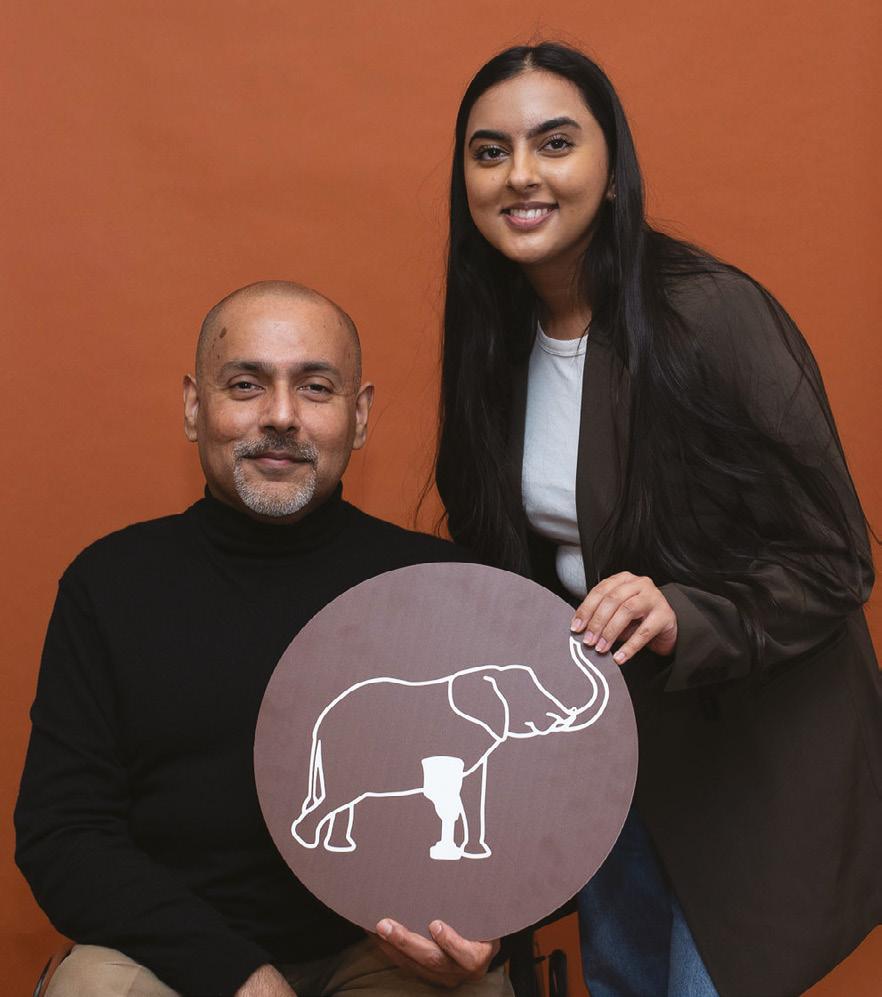
But also then you know the other side of it being it could be a completely different disability, it could be not acquired, it could be from birth and that experience for that South Asian person is going to be so wildly different for them than for me.
We’re not able to hear so much from them because it doesn’t feel as inclusive or as comfortable or as safe as space for us to encourage that. Sometimes we have to think about these opportunities that would come to us because we get invited to a panel and it’s all white bodies and then just one South Asian person. It ends up falling on that person to have said something about it, which can be exhausting for us.
I want as many people as they can to be talking about what their experiences are like so that things can be improved, whether that’s socially or within the community or with services that are provided for disabled people.
QHow can individuals who wish to be allies in respect of Chronically Brown and neurodiversity reconcile what we’ve just talked about?
A: Yeah I think it’s a big question. I get this question quite a lot and it’s a question different people have different responses too.
I think for Chronically Brown specifically it’s about sharing what we’re doing and support us in a way that we can access things that other Disabled People Organisations (DPOs) are accessing, but to also safeguard those opportunities as well - so that we don’t have to do that added extra bit of admin that goes into okay, well are the panels that you’re inviting us to take part in - or this advisory board that you’re inviting us to take part in - or just anything related, is that actually representative of who we’re working towards? Is it representative of the other cultures and communities that are so widely
ignored into the disabled community as well?
Because that additional admin is taking a valuable resource from us to be able to actually work. Primarily we want to work for our culture, we want to improve the culture to be more inclusive but it’s going to be so much harder when we’re having to do that additional admin of stuff.
QWould you mind talking us through your diagnosis and your access needs?
A: I’ve been diagnosed with Hypermobile Ehlers Danos Syndrome (also known as EDS.), and ADHD, Autism - I’m trying to recall now…
Those are the main ones that affect me day to day mobility-wise, accesswise, [enough] that I use crutches and sometimes joint compressions, I need to have advanced warning for things, just for me to grasp my head around things. If I need to travel somewhere it takes so much admin for me to figure out how I’m getting there, if I can do it in a certain time frame, if I need to give myself time to walk somewhere as well.
QAnd what would you like the non-disabled community to know in respect of disability being something that is multifaceted and being more nuanced than just ‘uh, disability, he’s in a Wheelchair’ ?
A: I feel like the biggest thing I want them to know is the identity around being non-disabled does not last forever. There’s going to always be something, that that’s just how life works, and if that isn’t enough motivation for you to support disabled organisations or disabled peoplethen I don’t know what will convince them, because it’ll be very very rare if there is somebody that doesn’t have a health issue at least once in your lifetime.
iTo find out more please visit: chronicallybrown. com
TWITTER: @chronicbrown
INSTAGRAM: @chronicallybrown
FACEBOOK: @cchronicallybrown


A rooster of celebrities have been photographed with NeoWalk canes, including Christina Applegate & Selma Blair. We talked to the founder to find out more
Arooster of celebrities has been photographed in recent years with glittery, colourful canes and walking sticksamong them, individuals such as Christina Applegate and Selma Blair, actresses who have both been diagnosed with MS.
Q: Take me back to the start of NeoWalk. What was the inspiration behind the business, and what was it that provided the impetus?
really happy using this.
So I sat and thought about what I would like out of a walking stick. And at that time I was still going through quite a lot of body image changes, you might say. So I wanted an invisible walking stick. This is what I wanted. I wanted a clear one, which is which is why I looked at the clear acrylic material. And I made such a stick and I made a red one as well. I’ve made them in my kitchen, moulded round a wine bottle. That’s a legendary story now. My first ones.
I wanted this invisible walking stick because that was how I felt I wanted to beinvisible - [as I was] still coming to terms with my disability.
So the impetus was simple and that was me becoming a onelegged person. I mean that if anything’s going to drive change in your life, probably something like that is going to isn’t it?
So I was hopping around as an amputee. I’d caught this horrific MRSA infection in hospital during surgery and ended up having my left leg amputated. And I was hopping around on a prosthetic doing really, really well, but sometimes needing to use a walking stick, looking around and seeing nothing that I liked, seeing nothing that I would put my hand on and say I feel
So I wanted this invisible walking stick because that was how I felt I wanted to beinvisible - [as I was ] still coming to terms with my disability. But [I] found that,actually, I really loved the red one because people looked at it and said, wow, look at your walking stick.
They didn’t particularly look at me and say, oh, why are you using a walking stick? They just looked at my stick. So it shifted that emphasis from my disability to my mobility aid and people wanted to talk to me about it. So I knew that if I was having that experience, that was an experience that I could give to other people as well. And that was really how NeoWalk was born. It was just like that.

I think entrepreneurism or being an entrepreneur is the same regardless of whether your able body or disabled
Q: Why is it, do you think that society sees disability or something that is very grey, depressing and all that kind of semantic?
Laziness, I think designers are lazy. They’re in their grooves, they’re in their lane. They’re designed for the market that they know that exists and they’re comfortable with it. Disability is seen as something that people don’t want to see. They don’t want to have it in their face. They don’t want to have to speak about it. They don’t want to have to ask questions about it.
They would rather it just didn’t exist at all. So I think that’s also why mobility aids historically have been quite grey and just blending away into the background.
I think it makes people uncomfortable. I’m talking about ablebodied people. And I think that’s why but a lot of laziness on the part of the designers who, just, they’re starting to but who just have refused to accept that this market, this genre of people actually has not only a monetary value to them, but actually has a value to
society.
Because I think that’s also what disability is seen as. We’re very bit useless really. I mean how many times have you been looked at?
But with the head tilt and, you know, [I’m] sat in my wheelchair and people look at me and go, oh, you know, and they’ll ask the person I’m with and go, oh, you know, does she can she get out of the chair?
I’ve got one leg. I’ve still got a full brain. Do you know? Yeah, but I just think that misconception of what people with disabilities can do. And I think until people see our worth, I don’t think we’re going to see people investing and feeling that mobility aids fashion, all those kinds of things that that that is worthwhile either. I think there’s a big shift [that’s] needed.
Q: What would you like to say to people who see disabled folks in this way?
I’d like to say how are you doing? Do you know - [what is it that makes] you think I’m doing so badly? Let’s compare shall we? Let’s how are you doing?
Really, truly, because I think people do look at us and think, what do we contribute to society?
You know, I go to a GP or go to a specialist or go to a wherever hospital. And they say, what do you do when I said I work for myself? Oh, right. Okay. And how many hours do you work doing that?
Oh, I said roughly about 60 hours a week. Really? I’m going, yes. I am perfectly capable of working such a long time.
I have a brain. I’ve got a business. And they look at you like, well, what do you contribute to society? And I would quite like to say, well, what do you actually know? Turn that. What do you contribute that you feel is so much more than what I contribute? But do you know what I mean? What makes someone able-bodied feel that there’s so much more than a person with a disability? And I think that’s the attitude that we get that we’re not enough. We’re less than other people. And I’d quite like to ask people, why do you think you’re more than me?
Q: Is there a ‘right’ time to use an ability aid?
When your body asks you for it, I would say that’s [the right time] and we help a lot of people come to terms with using their first mobility aid. Is it right? Do I have to wait to be told? Do I have to get my doctor to tell me, should I, when should I [use a cane]?
When your body is asking you for it, whether that is a wheelchair, whether it be a rollater, crutches, walking stick, we advocate for all mobility aids here. I know we only make one, but we advocate for the use of all of them when your body asks you for it. So when you’re feeling fatigue, when you’re feeling pain, when you’re having accidents, when you’re hurting yourself, when you’re falling, or if it’s prohibiting you from going out, if your life, if your world suddenly becomes so much smaller than it used to because of your mobility, then it’s time.

Q: You have worked with celebrities, such as Christina Applegate, as well as Selma Blair, who was iconically photographed at the White House with one of your canes. I wanted to ask, how does that feel because it’s such a landmark moment - it’s a cliche, but a photo is worth a thousand words.
Yeah, completely. And that, do you know what that’s exactly what I thought when I saw the pictures of Selma, I mean, they are iconic. There’s no mistaking where she is and there’s no mistaking who she was with.
I think about, I talked to people about how important it is for children to see themselves represented in society because then it gives them the knowledge and the empowerment to go on and believe that they can, they can do these things that other people are doing.
They’ve seen themselves represented, they’ve seen other amputees. And I just think what an absolute inspiration for other people to think, you know, there’s a woman with a walking stick, achieving all these great things and representing [us] as well.
She was up there representing the American disability system. So proud, hugely proud, a bit blown away, little bit of a fangirl, I’m still a bit of a fangirl with Selma and Christina, but I know
her better, but yeah, still a bit of a fangirl with Selma, hugely proud.
Q: Let’s talk about the manufacturing process. What’s that like from start to finish?
I don’t know whether people still realise this but all the walking sticks are still all handmade in our workshop in York.
So they start life as a straight rod until we find out what you want it like. So you tell me you want a snoopy shape in a 34 inch and you want it to be able to light up. So that’s when we get to work on it.
So it starts life as a straight rod. So part that needs bending into the handle shape is heated up and then it’s moulded into this newbie handle shape. And then we go through our process of making sure that the measurements are correct and it’s cut to the right length. And so by the time it’s got its ferrule on the end, it should be exactly the length that that you ask for.
But so that the process isn’t, isn’t complicated. It needs a lot of attention to detail because we don’t settle for anything leaving here with a mark on our scratch on or a chip. If it comes through to the girls in the packing office, it just goes straight back. It won’t leave

here [as] we’ve got really high standards.
Q: For people who want to go into the entrepreneurial space, what would be your advice and why?
I think entrepreneurism or being an entrepreneur is the same regardless of whether your able body or disabled - it would always be [to] research your product. Be 100% certain that your product has a life out in the market. Make a product, make a sample one and try and sell it to somebody and see if you can sell it to a stranger, not to your mum, that isn’t fair. But make a sample product or a sample page of a website if you’re building something more techy and websitey digital and try and sell it.
And you’ll know for sure whether or not the product has got legs and really marketing is so important because you can have the greatest product in the world at the greatest price. But if nobody knows that you’re selling it, it’s pointless. Nobody’s going to buy off you. So it’s learning about marketing. I would say embrace the whole experience of being an entrepreneur. Don’t just label yourself as the designer. Don’t just label yourself as the marketing person. Learn about the finance side of it. Learn about the learn about all it because it is utterly fascinating.
I would say embrace the whole experience of being an entrepreneur. Don’t just label yourself as the designer.
I’ve thoroughly enjoyed it because I entered into the space not as an entrepreneur really. And I’ve learned about it. I’m still learning every day, every day is a school day. And I love it. So I would say embrace the whole experience of being in business. Don’t just try and and pigeonhole yourself in one particular part of it because you’ll probably find when you’re just starting off, you won’t have any money to pay anyone to do the other bits anyway.
So you’ll end up doing them all yourself anyway. But it’s just, it’s a joy. I’ve really enjoyed being an entrepreneur and just yeah, just dare to dream. I would say just dare to have the dream.
To order your custom made cane from NeoWalk, please visit Neo-walk.com NeoWalk has also launched a hub for custom fitting appointments of their canes.

If you think about it, disability seemingly has a language of its own - and one that can be hard to ‘get it right’ at the best of times. In each issue we will dive in to a new term.
The Equality Act is a crucial piece of legislation - and in it, it spells out the definition of what is a disability: you are considered in law to be disabled if you have a physical or mental impairment that has “substantial” or a “long term” negative effect on your ability to carry out normal activities on a daily basis.
This can encompass a wide range of conditions - including but not limited to Autism, Endometriosis, Depression, MS, and others.
There are 3 separate models of how to approach the concept of disability - and how it impacts interactions with a disabled individual. The usual model is ‘the medical model’ - in viewing the body as something in need of fixing, that the body is not functioning, and just needs to adapt to meet the demands placed upon it.
The Social Model Of Disability is the opposite of this - in suggesting that it is in fact society that is the disabling factor. So, say you are a wheelchair userand you come to an entrance that has a step into a building. Now,
your wheelchair can’t go over it without a ramp that is not in sight - but it is the fault of the society that has put in the step, not that of the body.
The Social Model Of Disability is important because of the way it reflects society, as well as having a ‘human’ approach. It is person affirming - in encompassing disability as part of lived experience, rather than suggesting it is something that is separatist, or to be regarded in isolation. It also reflects that more individuals are beginning to regard their disability as a facet of their
The Social Model Of Disability is important because of the way it reflects society, as well as having a ‘human’ approach.
identity, too. It’s also a way of interaction that is best practice, such as when it comes to the Equality Act; this legislation points out that reasonable adjustments have to be made to create accessabillity for disabled individuals. That includes, but is not limited to, disabled parking spaces, accommodations at work, and more. So - it’s probably best to start with this model, just as an example of best practice!
There are multiple ways that you can reflect this way of being - and a simple way is to start with the language used around disability. Disabled individuals are not heroes or tragedies; they are also human beings, and are allowed to live with nuance. Always ask a person the language they use about themselves - but generally, disabled person is preferred. (So not ‘person with a disability..’ ) Disabled is not a dirty word - it is just a word to describe another part of being human, and we need to embrace it more.

Carole Edrich, is a self described ‘recovering photojournalist’ and social entrepuner, who took the ÖBB NightJet sleeper train from Brussels to Vienna. Here, she delves into the issues surrounding disability & travel on her journey.
From the first time I read Agatha Christie, long distance train travel has been an aspiration. Great scenery, fine dining, an ever-changing view and interesting strangers in manageable doses form part of the attraction, as does the romance of the train itself. It’s more environmentally friendly than flying and would be my first adult sleeper train experience. Little did I know…
On a train, this little lady, journalistic trammels three. With the treatment a bit afraid is, wondering what the worst would be!
It’s more environmentally friendly than flying and would be my first adult sleeper train experience.
There’s still magic in it. Entranced by the vistas of the places we passed, I ignored the work I had spread on the window-side table. Had I known I was going to spend the night worried about whether I’d be turfed from my accessiblecabin bed and dumped on a random seat elsewhere, I’d have worried more about that and less about making sure that the phone was set up to time lapse the trip.
Before you read further, I’d like you to imagine you’re a wheelchair user
travelling with a friend with hidden disabilities. Think of the worst, most predictable, clichéd disability- and trainrelated problems you’d encounter. List both the over-the-top and mundane ones. Randomly duplicate some, because if a thing’s been done badly, you can bet it’s been done a lot.
If you are a wheelchair user, you’ll have drawn from experience, and might have more than the 30 accessibility fails that beset me. Sticky plugs and switches didn’t work; the door was so heavy it was hard for me to move (nigh-on impossible if you are on wheels); the handle to pull yourself out of bed was broken and there were no other rails or guides; stewards refused my disabled status, didn’t


respond to service calls, asked for a non-existent certificate of disability and told me they might make me vacate the cabin; I had to search out another who promised to recharge my laptop and phone but -despite reminders - didn’t; lights turned themselves on in the small hours; a delay was announced so early that it woke me up; every passenger on the train was expected to disembark, queue, buy a lunch at a ‘shop under the bridge’ and re-alight inside 10 or 15 minutes; and breakfast that was so much later than agreed that it mucked up my blood sugar making everything feel much worse. And there’s more! it’s quite a list! A lovely little list.
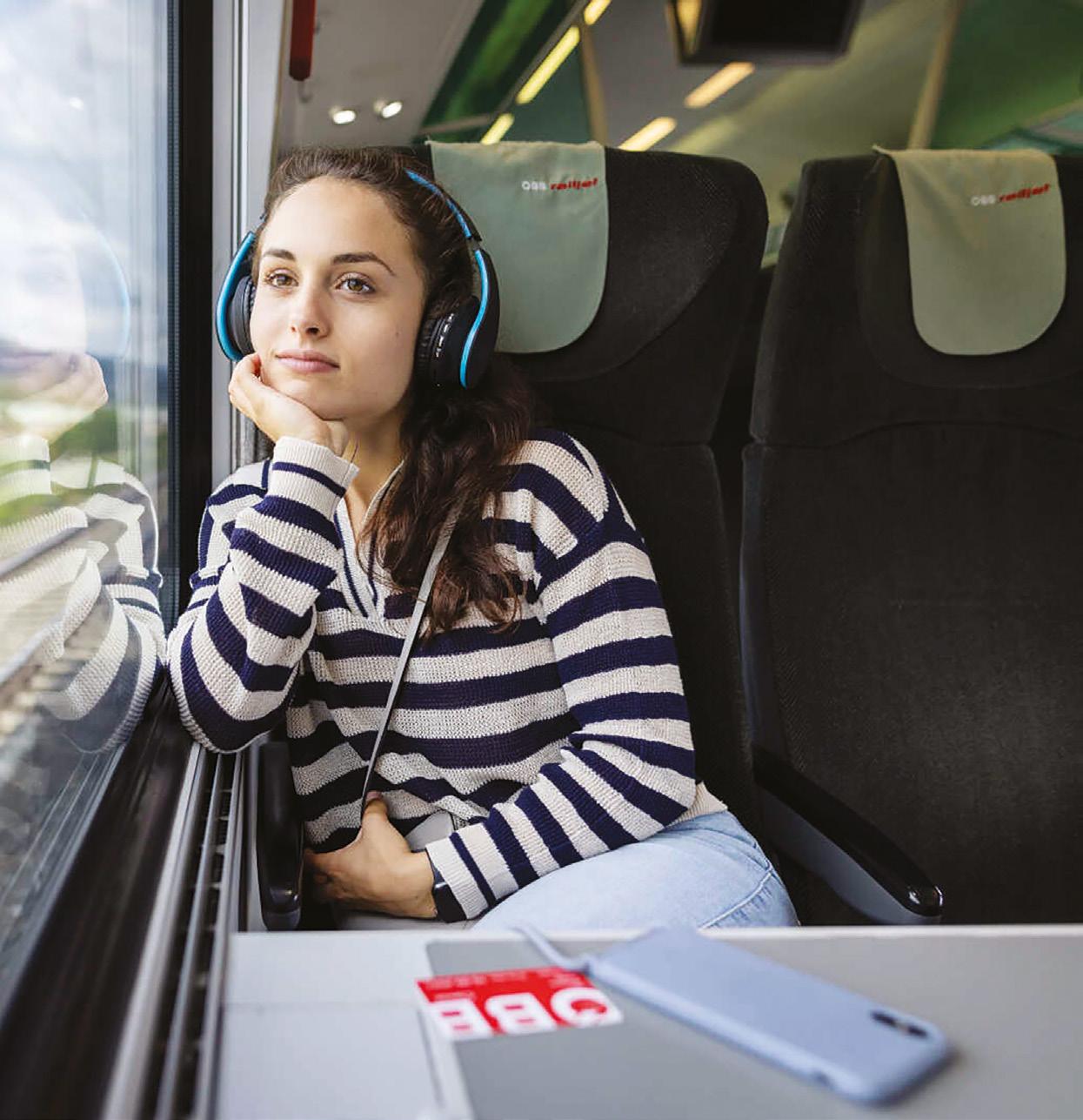
If you are a wheelchair user, you’ll have drawn from experience, and might have more than the 30 accessibility fails that beset me.

No phone charge meant no live directions and the station’s tourist information office hadn’t heard of the hotel recommended to me by Tourism Austria. I finally reached it around 4.5 hours after I had planned, with my return scheduled less than 17 hours later. The night’s stress-related fatigue played havoc with my normallymanageable ME, so I had to rest when I got there. That left just enough time to find somewhere to eat and get back to the hotel that night, with scant hours for sightseeing and coffee the next day.
I wanted to write, file and forget all of this, but the tediously sentient part of me wouldn’t let go. Maintaining a good level of accessibility without consideration, thought and training is like following a treasure map with your eyes closed, so I emailed NightJet when I got home. ÖBB is Austria’s largest mobility provider and they’re rolling out new, more accessible carriages, so I hoped they’d show how my experience wasn’t typical or discuss the new rollout. Instead, in a PR fail on par with that achieved by Liz Truss on her short term in Office, they didn’t contact me at all.
I had nagged the poor Tourism Officer

for weeks before they sent a message through her. Apparently, the stewards’ inability to accept my booking, my disabilities and the evidence of their own eyes was a ‘communications failure’, the poorly maintained compartment and miserable service weren’t ‘what they aimed for’ and my list had been ‘passed on to the relevant teams’. Beautiful new carriages notwithstanding, accessible communications, sensitivity to hidden disabilities and a review of their DEI training doesn’t seem to be on the cards.
Despite the challenges I enjoyed my brief trip to Vienna. There was great coffee, wiener schnitzel and apple strudel to die for and I’m grateful to ÖBB NightJet for providing the comedy gold for my next standup solo. I’ve got ‘em on the list, a lovely little list, of all the things they missed, and oh they really missed. I’ll get my coat.
Maintaining a good level of accessibility without consideration, thought and training is like following a treasure map with your eyes closed, so I emailed NightJet when I got home.
iCarole travelled to Brussels on Eurostar eurostar.com. Learn more about the new upgraded NightJet service at nightjet.com/en/ komfortkategorien/spezialabteile/ barrierefreies-abteil
Alternately travel through the day with TGV and Railjet through the awesome Albec Pass and Alps, or travel from Amsterdam via Munich with NS and DeutcheBahn.
AUTHOR: Carole Edrich, photographer, journalist and board member for Unlimited
FACEBOOK:
CaroleEdrichPhotography

Pacing is a seemingly mythical concept, but it can be used to help manage a range of conditions & environments, such as with travel.
Amy Arthur is the author of Pace Yourself; here she deconstructs what it means.
“Just learn pace yourself,” I was told, at age 15, shortly after my diagnosis with Myalgic Encephalomyelitis, or Chronic Fatigue Syndrome (ME/ CFS). Pacing, I’d learn, was an energy management technique that involved balancing activity with rest – a tightrope walk I’d have to become
skilled at, because to fall would lead to worsening symptoms.
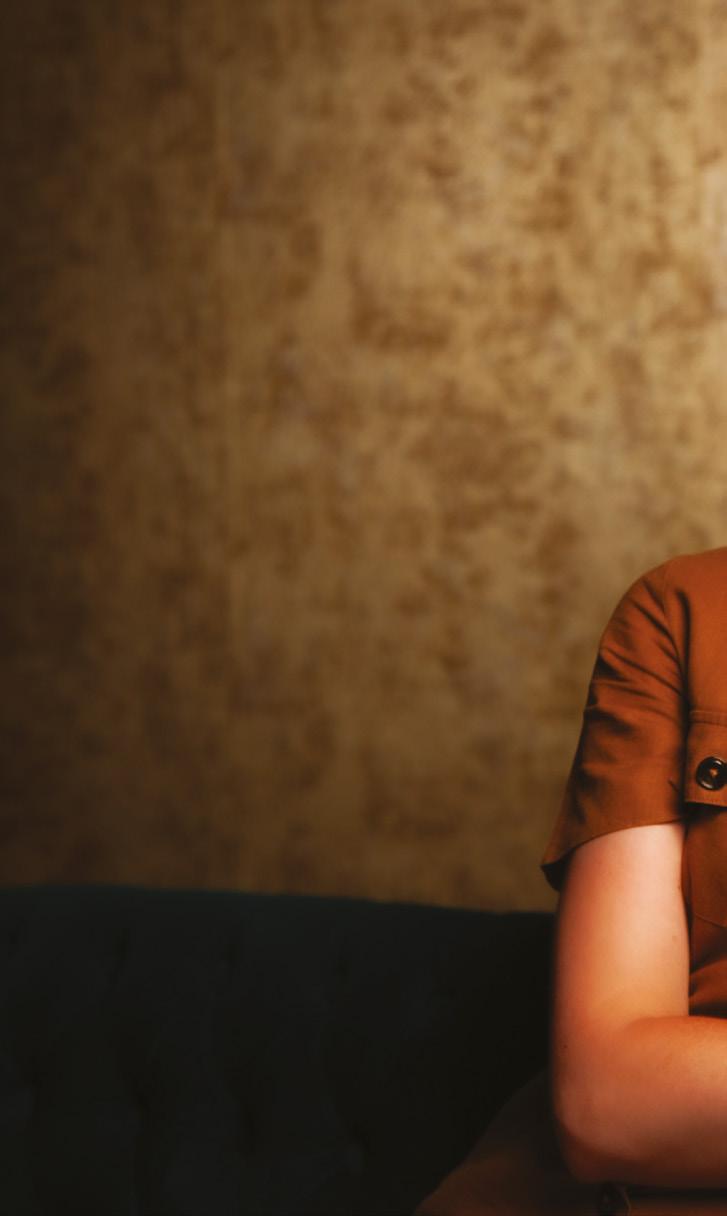
Pacing is very individual: the things that sap my energy, like talking or standing, might not have the same effect on another person with ME/ CFS.
As well as being important for the management of ME/CFS, pacing is also used by people with other conditions where symptoms can be exacerbated by overor under-exertion. As an example, it’s recommended to people with Rheumatoid Arthritis, Postpolio Syndrome, and Chronic Pain. Its principles of monitoring daily activity so as not to worsen overall health likely appear in the management of other conditions, acute or chronic, even if the term ‘pacing’ isn’t used.

Pacing isn’t about finding the perfect balance of activity and inactivity – that isn’t possible, given life’s tendency to throw surprises our way.

and inactivity. These vague offerings make pacing seem like a mythical, idealised concept that is far-removed from reality. Of course I shouldn’t use more energy than I have each day, but in practice there are things that have to get done, regardless of how ill they might make me. Right?
Pacing is very individual: the things that sap my energy, like talking or standing, might not have the same effect on another person with ME/CFS. Their biggest drains might be typing or reading, two things I’m thankful don’t tire me too quickly, given my day job. The uniqueness of a person’s experience of energy is, I think, the reason that pacing is so hard to teach. Aside from explaining why it’s important to manage where your energy goes, there isn’t much a medical professional can say – my own wellmeaning doctor simply handed me a two-page leaflet that roughly outlined what activities I might consider as ‘using energy’ or ‘restful’ and asked me to plan out everything I did down to the minute, alternating between activity
That belief, I now know, stemmed from a misunderstanding about what ‘pacing yourself’ really means. Pacing isn’t about finding the perfect balance of activity and inactivity – that isn’t possible, given life’s tendency to throw surprises our way. Rather, it’s understanding how things affect your energy levels so that what you do dayto-day is within your body’s means, not in spite of them.
The easiest way to start assessing how your daily life uses energy is to think of activities in terms of their mental, emotional or physical demand. Taking a shower involves a lot of physical energy, for example, while using a computer requires cognitive effort. You may do things that use more than one type of energy: writing this article isn’t a purely mental activity, because the subject matter is personal and emotional.

Thanks to pacing, I don’t do any of those things. Instead, I get a preprepared meal out of the freezer, made on one of the days where I had more energy available.
To avoid overexerting myself, I’ll need to limit the amount of mental and emotional energy I spend after writing. While my two-page flyer might suggest I need to rest, I know that I’ll still have to make food, that I ought to reply to friends on WhatsApp, and that I’ll need to occupy the time from now until I go to bed.
I could use further mental energy deciding what to cook, use emotional energy talking to friends and then spend the rest of the evening tired and in pain but forcing myself to stay awake because I know I won’t sleep well if I nap now.
Thanks to pacing, I don’t do any of those things. Instead, I get a preprepared meal out of the freezer, made on one of the days where I had more energy available. I ignore messages from friends, who know me well enough to assume I haven’t got the energy. Then, I assess my internal feelings to decide how I spend my
evening. If I’m still mentally and emotionally depleted, I’ll watch episodes of my favourite show where I know the story by heart. I might do crochet or knitting if I have physical energy. I’ll try not to be tempted by that new film I’m dying to see on Netflix because everyone is talking about it; I know it’ll take too much concentration right now. I save it for another day.
When you focus on the limitations of your energy, pacing can be extremely frustrating, I know. But ultimately, a life poorly paced is much worse.
For those of us with ME/CFS, pushing our bodies to use more energy than we have can lead to postexertional malaise (PEM), defined as the worsening of symptoms or appearance of new symptoms following activity. I’ve had to learn which activities will trigger PEM –some are completely off the table, like running or cycling, while others I can do for a short time, like walking, as long as I stop before I overdo it.
Some have suggested that the inability to rest and allow your body to recover after an illness is what

leads some to develop ME/CFS, or Long COVID following infection with COVID-19 – though this doesn’t explain why people who do rest can still develop post-viral conditions.
Pacing is by no means a cure for ME/CFS. It isn’t even a ‘treatment’, just a way to manage some of the symptoms that arise. When fatigue and pain are such subjective experiences, there can be no one-sizefits-all solution. Instead, we each have to figure out what affects our energy levels and try to find a pace of life that allows us to still have happiness and achievement without making ourselves worse in the process.
Pace Yourself: How
iTo Have Energy In An Exhausting World by Amy Arthur is out now.
INSTAGRAM: @a_e_arthur



Adaptive fashion is everywhere at the moment - but just why should it matter to us all? Disability Review Magazine decided to investigate.
Adaptive fashion has been ‘seen’ more so by the fashion world lately, beyond the usual celebrities using disability for a theme of a photoshoot when they themselves do not have a disability. At it’s core, it means clothing and accessories that are disability inclusive and accessible; say that you struggle with fastenings on a dress or even on a handbag. There can be changes made - such as in using bigger buttons, velcro, etc. Other features can include adapting the pattern of a garment, such as to allow for access if you need to have medical tests, wear a stoma, and other conditions.
So I’m not necessarily like a social influencer.
much revenue is lost through an inaccessible High Street; businesses are loosing an estimated £2 billion monthly, by ignoring the basic needs of this demographic. However, the collective spending power of the disabled population - where 1 member or more in a household has a disability - is estimated to be worth £274 billion. That’s a lot of value in an untapped ‘pie’, just by not taking into account disability.
I’m not a content creator for content creation sake.
Rather than deriding the push for fashion to be disability inclusive as ‘political correctness’, it’s worth knowing that it makes economical sense, especially at a time of when questions remain over the future of the High Street, coupled with worldwide economic uncertainty.
According to the UK’s last population consensus, almost a quarter of the UK’s population is considered to be disabled; this is the world’s largest minority group, and is the demographic that is growing the fastest. The metric of the Purple pound measures how
Victoria Jenkins is the founder and CEO of Unhidden, a sustainable adaptive fashion label. Asked why adaptive fashion should matter, she said: “Well, not just from the point of view of 1 in 5 of us, which is rapidly approaching 1 in 4 because we’ve got more and more natural disasters, conflict, and an ageing population. It [disability] is going to touch everyone at some point. Something like 73% of consumers are touched by disability. So even if it’s not you yourself, somebody you know has a condition or a disability. It’s important because we all have our own struggles - but just getting dressed shouldn’t be one of those problems. It’s not just a case of it being the right thing to do, from a human rights perspective, but financially it does make sense as well.”


Roxy Murray is a thirty something year old model, known online as the Multiple Sclerosis Fashionista. With a background in fashion styling, she has become one of the most recognisable faces in the adaptive fashion world. We interviewed her about her journey, her disability & more.
QAs an opening question, do you mind me asking how you broke into modelling?
A: So I’m an unsigned model. Anything I’ve ever done myself, I have booked myself and I think how I broke in, how people kind of visually saw me was because of my activism and just the fact that my background is in fashion. So I’m not necessarily like a social influencer. I’m not a content creator for content creation sake. I come from a fashion styling background and for me, fashion and clothing is the thing that made me feel like me when I was going through my disability journey when I was diagnosed.
I wasn’t born disabled, I acquired a disability through my life. When I was 18 years old, I was at home and I woke up with double vision in my left eye, blindness in my right eye.
I just started talking about disability and fashion and then I was posting images of myself with my ability aids and just kind of like it was part of the narrative of my story. I guess a lot of people around me started picking that up. I’ve got a lot of designer friends and fashion friends and they were like, would you ever like, I know you’ve got disability, you have a walking aid, but would you ever want to go on a catwalk as yourself or you ever want to model?
And I guess from starting that, it just kind of spiralled from there and, then other people would be like, would you do this editorial for me? Or would you do this feature?
QYou briefly alluded to a disability journey. Do you mind me asking about that and how that began?
A: Yeah, absolutely. So obviously I wasn’t born disabled, I acquired a disability through my life. When I was 18 years old, I was at home and I woke up with double vision in my left eye, blindness in my right eye. I was rushed to a hospital, I had a series of tests and that point, it wasn’t widely known that MS affected people from ethnically diverse heritages. It was seen as a disease or an illness that kind of was only something that white women specifically would have. So I was misdiagnosed at that point.
The wild thing is, I had atypical MS symptoms. So many people get blindness in their right eye with MS and it’s like a classic symptom. So what happened was there was like - [medical professionals said] to me, you’ve got lupus.

Almost a 1/4 of UK population is disabled according to UK last consensus.
And the thing about it is my mum’s sitting next to me and my mum’s also white. So I’m like, I’m thinking, well, okay, I get it. But also my mum’s white. So we’ll see.
Eight years, I went through life thinking I had lupus. But I know people with lupus and we were having conversations and it didn’t really connect. I was going to university, which wasn’t the greatest thing. I never ended up finishing my degree. Now I know it’s because I didn’t have the drugs that I needed. Because with MS, if you get a diagnosis, you need to go into treatment straight away, which gives you a better trajectory. I didn’t have that option. I was getting therapeutic lumber punctures, which is a wild word to put together, therapy and lumbar puncher! Not the same thing. Because I have benign intercranial hypertension, so my spinal fluid rises too quickly, which puts pressure on my brain. So they were giving me lumbar punches to reduce that fluid. But they never tested the fluid, which is wild because that also gives you a diagnosis of MS.
I relapsed while doing a retail job while I was doing my university
degree. Because I thought I was invincible as we all do when we get a diagnosis. We kind of either go down or we go, we can do everything, take on the world. And I couldn’t put my hand up to hook clothing on a rail. I just couldn’t do it. And obviously my manager was aware that I was dealing with something.
[Weeks] before that I was literally having panic attacks on the train because I would phase out of the scenario and then I’d pass out on the train. And then I had a experience where I was in Shepard’s Bush. And my mum lives in Paddington, well, I lived in Paddington and it was not that many stops on that line to get to Shepard’s Bush. And I was meeting my partner for lunch. And they got out and I got to the bus stop. I got to the station, I got off, was by the bus stop because they literally like worked across the road. And I remember seeing them, but
I remember seeing this overwhelming sensation of like over sensory. And I passed out and I woke up in a pool of my own urine.
And it was the most embarrassing that ever happened to me. But it put me in a place where I was like, you know what, nothing can be worse than this. So that relapse was the best thing that ever happened to me because I went into the A&E. [There was this woman], she was like, I’m reading your notes and I’m not seeing the correlation. Plus you’re talking to me. And you’ve got a slight stroke [down the side] of your face. I couldn’t even see that in myself.
She’s like, I’d love to retest you. I know you have [a fear of] Lumber Punctures - because I’ve had too many and they’re always horrendous. She’s like, I promise she will be the last one. I just need to test the spinal fluid.
By the way, at this point, I have no idea the concept of MS. It’s just a random word someone’s throwing up.
It’s not just a case of it being the right thing to do, from a human rights perspective, but financially it does make sense as well

But I’m feeling that, well, at least you feel like you know what you’re talking about. And you’re telling me it’s not because I’m fat or I’ve got Lupus or the things I’ve had previously. She was like, I will sedate you. I’ve never been given sedation before this while having a Lumber Puncture. I was told that it’s not a thing. So she sedated me. She gave me the Lumber Puncture, the best Lumber Puncture I’ve ever had. And then weeks later, she was like, you’re positive for MS. And I was like, well, what’s MS? She’s like, unfortunately, there’s no cure. So you’re like, okay, it’s great to know I’ve got [that], there’s no cure. It’s a weird mix because I’m excited and I’m elated because I feel like I know. I’m dealing with and that’s great. But there’s no cure. So I don’t know if I should be at all happy.
Naturally, I went through mad depression after that for so many reasons, but it linked together, like my uni, my dreams were feeling like it was slipping away from me. You’re seeing friends at that age, flying off to Ibiza or traveling the world and you think you’re going with them and you’re literally going nowhere. And all these emotions are happening. And the more I would think, what am I going to do next? All I can hear is I have this incurable illness.And I don’t
By the way, at this point, I have no idea the concept of MS. It’s just a random word someone’s throwing up
know what’s going to happen next. I’m still trying to work because that’s my psychic energy, that I’m going to like keep going, if nothing will stop me and that I’m going to take on the world because that’s just what I was like then.
QDo you mind me asking, how does MS impact you when it comes to dressing yourself and the needs the access needs around clothing?
A: So first of all, like I was very avant-garde. I love concept clothing. So they’re not ‘real’, they’re not clothing from day to day. That was just my thing. I love styling things [like that]. I obviously realised when
I got illness, I cannot physically cope with that level of adornment, that many things on my body, my body’s hypersensitive, it feels restricted. How do I work through that? So for me, I realised I had to change my whole style.
I needed to go for softer fabrics, a lot of its sensory, some of it’s like, [for when] I can’t get out of bed. Or I, there were days where I couldn’t even get in the shower to have a wash. So I realised that what I was wearing had to change. So that would be fastening. Maybe I can’t do a zip and a button. I need shoes, which we still have not found the shoes, because adaptable shoes are just like a whole other universe. But shoes, I’m not wearing heels any more. I’ve got like a beautiful heel collection, I physically can’t wear them. But I can’t give them up because they’re so pretty, you know, I mean, they’ve become art. But I’m wearing more trainers, so I’m having to find trainers. Sorry. So there you go.

Think chic, like chic alternative yachtwear, like loose fabrics, things that were not heavy. And I needed things that were easily to slip on, I couldn’t deal with bras at all. And I still find it really difficult. Because after a while you put a bra on, it feels great. That’s why you start feeling like you’re being encased into a straight jacket. They’re not fun. They’re not accessible. Who, what, like who, everyone has put a bra in on the wrong way round. Clip it together, flip it round, pull it up, sling your boobs in it, get it out.
And I don’t always want to ask for help. Sometimes you want the autonomy of being able to do your things yourself. Adaptable bras have got better, thankfully. Not perfect, but better.
QAdaptable fashion is even more important to me, especially as a stylist.
Talk to me about the importance of adaptive fashion. How important is it to see yourself reflected in this?
A: So for me, adaptive fashion is great. I love it. It’s amazing. And it’s also helpful for me when I change my mobility aids, depending on what I’m using depends on what kind of clothes I can wear. My issue with adaptive fashion for me is I don’t think it’s necessary fashionable enough at a level that I want [it to be]. And I’m hoping and I’m seeing that people are continuously pushing the boundaries of what that could look like. As someone that’s Artistic and [who] likes art and fashion and stuff like that, I want something that reflects my personality. And it’s nice to see that we’re starting to get those more out there pieces, those [that are] more colourful, those [with] more soul. Serotonin dressing is what I call it. That’s dressing for my serotonin.
And I remember when I first started this, like a few years ago, people were like, mobility aids shouldn’t be fashion. They shouldn’t be fashion. And I was like, I sit there myself going, is that really what people believe? Because for me, everything’s fashion. It feels like almost elitist that you’re telling me I shouldn’t be able to present myself in a fashionable way. Adaptable fashion is even more important to me, especially as a stylist, I would love to get my hands on people’s adaptable fashion clothing and style them. But sometimes I’m like, ah, no, like, don’t do that. Do this. And I haven’t done that yet. And that’s the reason why I should do, because I think we have some amazing pieces.
And I think the way you put it together allows people to elevate their fashion style. And I think it’s important for everyone’s mental health to feel like they can be themselves when they have a disability or an access need. Fashion shouldn’t be something that you are not allowed to enter because you have a disability.
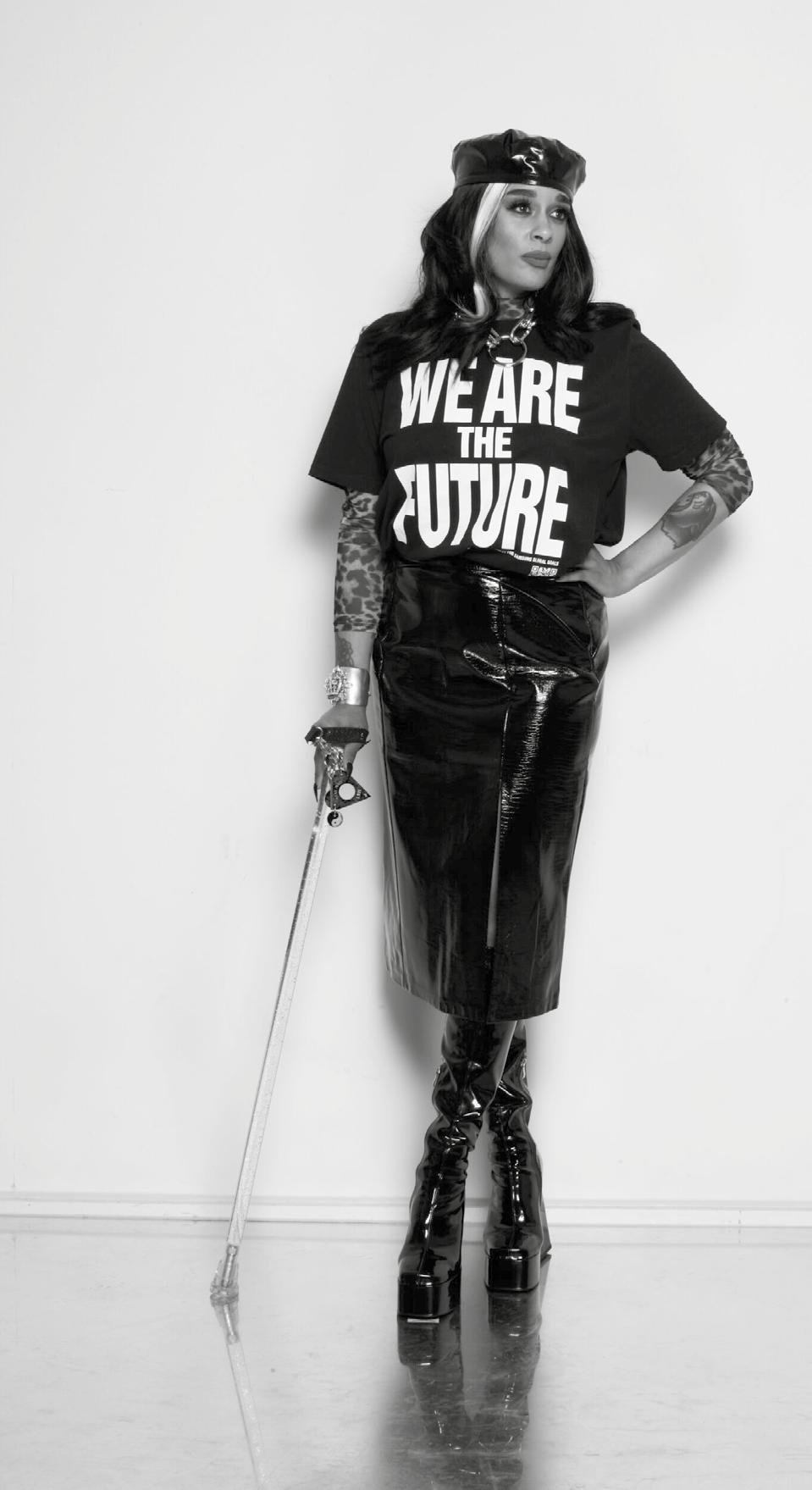


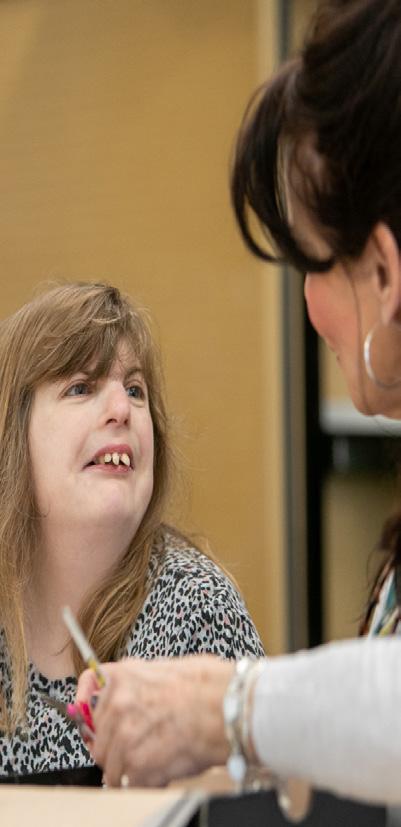

At Autism Unlimited one of our key aims is to increase awareness of autism and, with our programme of education, support and life skills training, create unlimited possibilities for those we support.
At Autism Unlimited one of our key aims is to increase awareness of autism and, with our programme of education, support and life skills training, create unlimited possibilities for those we support.
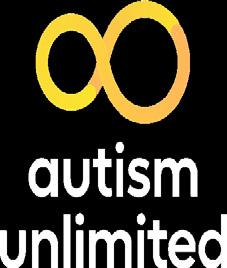

Through our development programmes and marketing campaigns we will generate greater awareness and understanding which will lead to true acceptance.


for children and young adults in our community and beyond
From early years to sixth form, we provide inspirational, personalised learning
Through our development programmes and marketing campaigns we will generate greater awareness and understanding which will lead to true acceptance.
From the age of 19 – 25 we provide individual life skills training
From early years to sixth form, we provide inspirational, personalised learning
From the age of 19 – 25 we provide individual life skills training
A workplace programme of training and advice that provides employers and employees with an understanding of neuro-diversity, the needs of neuro-diverse employees and outlines how simple adjustments to workplace environments will enable them to thrive.
A workplace programme of training and advice that provides employers and employees with an understanding of neuro-diversity, the needs of neuro-diverse employees and outlines how simple adjustments to workplace environments will enable them to thrive.
Everything we do is with the sole aim of creating unlimited posssibilities and opportunities for autistic people.
Everything we do is with the sole aim of creating unlimited posssibilities and opportunities for autistic people
Featuring stories from our community and the wider autism network that teach us about the characteristics and traits of autism and their life experiences.
Campaigns for children and young adults in our community and beyond
Featuring stories from our community and the wider autism network that teach us about the characteristics and traits of autism and their life experiences.
If you would like to find out more about the work we are doing or get involved in any of our activities please contact us on 01202 483360 for more details.
If you would like to find out more about the work we are doing or get involved in any of our activities please contact us on 01202 483360 for more details.
www.autism-unlimited.org
www.autism-unlimited.org
Pippa Stacey is a disabled creative based in Yorkshire, who splits her time between writing & speaking
As a teenager, Pippa also acquired a chronic illness. And now, she has written a book. Titled How To Do Life With A Chronic Illness: Reclaim Your Identity, Create Independence & Find Your Way Forward, the book will be released on 18th April. DRM talked to Pippa Stacey to find out more abut the book.
QTalk to us about the impetus for the book - how did the book start, what was the inspiration?
I’ve been one of the extraordinarily lucky ones who’s experienced a significant improvement.
When it comes to chronic illness, a lot of the focus tends to centre on the medical aspects of living with a long-term health condition - things like medication and symptom management. And although these things are important and heaven knows many people don’t get enough support in this area, I always felt there was a lack of guidance on how to go about… the rest of life. I remember being discharged from the specialist service where I got my own diagnosis, heading home with a handful of leaflets that didn’t contain anything particularly useful, and
finding myself curled back up in my childhood bed and wondering what on Earth happens next. In the absence of finding a magical cure, I wanted to write a book that focusses on the broader areas of life for people living with a chronic illness - from practical advice in areas such as adapting your hobbies and finding accessible ways to socialise, lived experiences of managing relationships and learning to selfadvocate, and words of affirmation around rediscovering your identity and figuring out what you really want from life. Essentially, it’s the book that my younger self needed!
QTalk to us about the impetus for the book - how did the book start, what was the inspiration?
The phrase ‘chronic illness’ is generally taken to mean somebody with a health condition that impacts their way of life for a prolonged period of time. Everybody is different, but it’s usually the case that there are limited treatment options, and people must learn to manage their conditions independently. Lots of people

with chronic illnesses have energy limiting conditions. These are identified as conditions where disabling fatigue and energy impairment are a primary feature, as well as shared symptoms like living with chronic pain and experiencing post-exertional malaise.
QPatients are often told to just learn to live with themselves - what’s the one thing that would make such a difference from other people?
I think the world would be a much better place if there was more awareness of the differentiation between the fatigue that non-disabled people experience and fatigue in the context of disability and chronic illness. Both are valid and should be accommodated, but the lifealtering experience of energy impairment
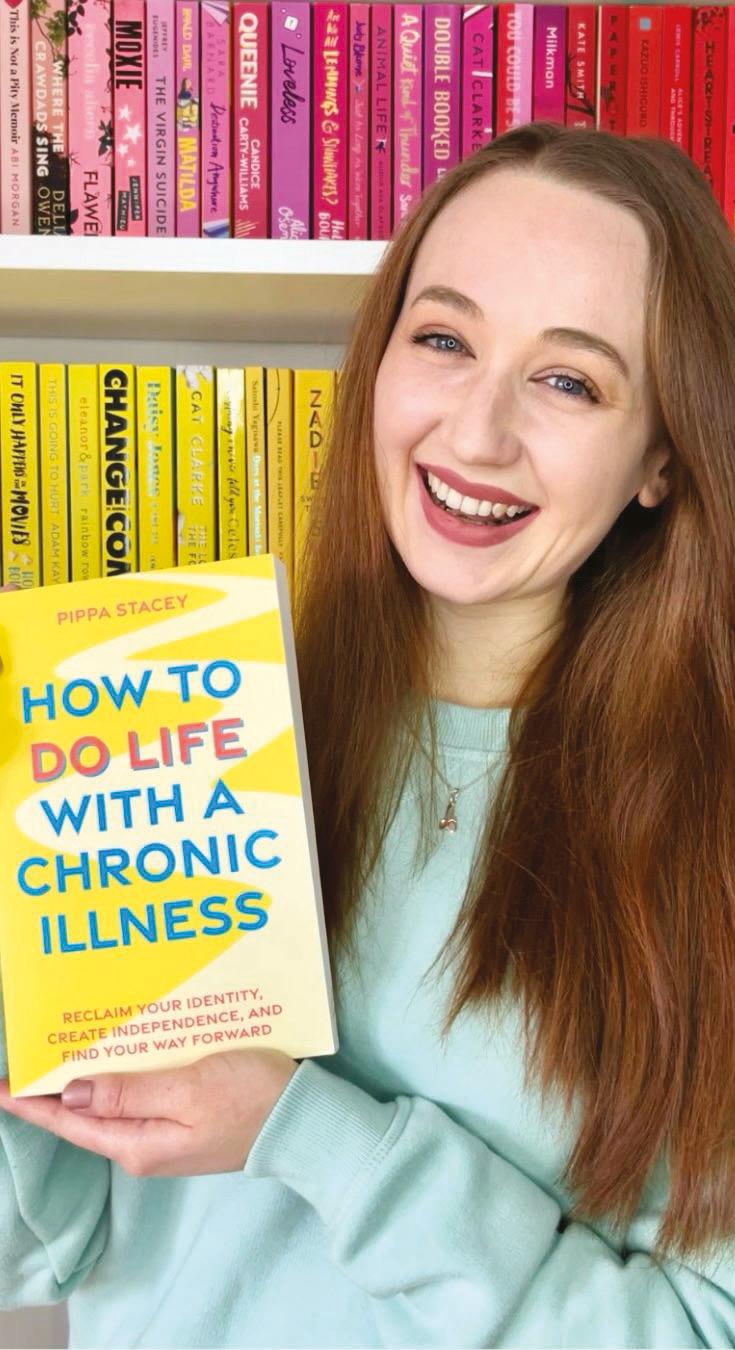
that lots of disabled and chronically ill people face is categorically different from the everyday tiredness or fatigue of non-disabled people. If more people recognised the severity and burden of this kind of fatigue, I think it would be much easier for disabled people to feel validated and have their access needs met.
One of the most difficult things about becoming chronically ill, for me, was that many of my former hobbies and passions became impossible, even with adjustments.
Q Would you mind talking us through your own diagnosis and what that means? Do you mind me asking, what are your access needs?
I was diagnosed with Myalgic Encephalomyelitis (ME/CFS) in 2014. Like many people, I had been going to the GP repeatedly for years without being taken seriously - as I was a teenager at the time, my increasingly painful symptoms were usually attributed to hormones or ‘stress over exams’. It was only after I experienced a major relapse that I was referred to a specialist and the diagnosis was confirmed. My condition impacts every moment of every day and has done for the last decade, but I’ve been one of the extraordinarily lucky ones who’s experienced a significant improvement. These days, my primary access needs revolve around pacing myself to manage my symptoms. This usually includes things like working flexibly and mostly from home, scheduling regular rest breaks, balancing tasks over the course of a day or a week to avoid over-exertion, and seeking out quiet and calm spaces where I can pause and decompress. It can often take a lot of planning, but it’s become much more intuitive with time!
If somebody had told me during my early years of illness that it was possible to feel happy, and that I would love my life one day, I wouldn’t have believed them.
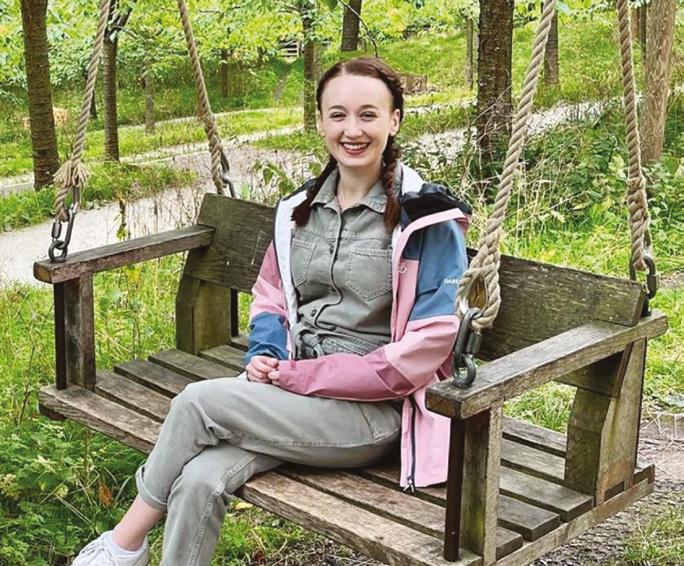
QThe book strapline speaks to reclaiming identity - is that something you felt that you needed to do?
Can you talk us through a bit more about that?
One of the most difficult things about becoming chronically ill, for me, was that many of my former hobbies and passions became impossible, even with adjustments. It felt like I was experiencing a lot of loss, and for many years I felt as though I no longer knew who I was as a person - my health and my symptoms felt all-consuming, like there wasn’t space for anything else. However, as time passed and I adjusted to my new reality, I begun to explore what else might be out there for me… and I realised there was still so much good stuff to be enjoyed. I still grieve the loss of my previous identity and former hobbies to this day, but I’ve learned there’s a real pride to be found in my identity as a disabled person.
Chronic illness is a big part of my identity and that’s nothing to be ashamed of or trivialise, but it’s not the whole of me. I’ve realised that even alongside disabling illness, I still have the power and autonomy to pursue the things that make me feel like ‘me’ - the version of myself that I’m becoming. And I really hope this book will help others to do the same.
QYou also make a point of avoiding the medical model and related jargon - can you explain what this means and why it was important?
Finding a place for chronic illness in the social model can feel tricky. For those of us who are disabled just as much by our relentless symptoms as we are by social barriers, it can sometimes feel as though we don’t quite fit into this approach - despite wanting to support it and find a sense of belonging. Drawing on the
work of brilliant organisations like Chronic Illness Inclusion, I wanted the language of this book to make people feel seen. I wanted them to know that their health struggles are valid and should never be squashed down, but I wanted to focus on how people can Do Life alongside their symptoms, moving away from previous narratives that claim chronic illness is a problem to be healed and that all of our usable time and energy should be poured into fixing ourselves… even if modern medicine is yet to figure out how to do that!
QIf there’s one takeaway from the book you’d like people to have, what would that be and why?
I wouldn’t wish chronic illness on anybody. It comes with immense challenges that are often invisible to others, and sometimes it feels like nobody in the world can possibly understand what you’re going through. If somebody had told me during my early years of illness that it was possible to feel happy, and that I would love my life one day, I wouldn’t have believed them. I thought that the only way I could find joy and fulfillment in life would be if I managed to make a miraculous full recovery. However, I’ve learned, and I hope others will learn, that happiness and illhealth are not mutually exclusive. It’s possible to live with disabling symptoms and yet still find joy and pursue the things that make you feel like ‘you’. If people take one thing away from reading this book, I really hope it’s that
iHow To Do Life With A
Chronic Illness:
Reclaim Your Identity, Create Independence & Find Your Way
Forward is out on 18th April.
WEB: lifeofpippa.co.uk
INSTAGRAM: @lifeofpippa
TIKTOK: @lifeofpippa_
FACEBOOK: lifeofpippablog

 Credit: instagram.com@swirl_global
Credit: instagram.com@swirl_global

“SWIMMING,
Steph Wilson, is a former Navy veteran who, having trained to be a swimming teacher, went on to co-found SWiRL Global, a community of parents, teachers and others who wish to bring inclusion and community to the world of aquatics
Swimming, the great equaliser.” A phrase I’ve seen bandied about and may even have used at some point; the properties of water act as a leveller, allowing people an equity of movement not possible on dry land. As you float in the warm water of a deep bath, or pool, the water does not care how many limbs you have and how many are ‘functioning’. It cares not if you use mouth words or if you are hearing; the hydrostatic pressure is like a welcoming embrace that supports us regardless. On the face of it, this should mean that swimming, and other aquatic activities are the most accessible for allexcept they’re not.
I have always felt at home and happiest being on, in, or around water. This led me first to a sea-going career, then to a career teaching swimming. I could see first hand everyday all of the health benefits that being in the water and swimming bring to so many. In addition to the usually touted benefits, I began to notice the positive sensory impact and regulating nature of water which allowed people to learn new skills they couldn’t on land, to express themselves, build their communication toolbox, to just be themselves and to be in a space where they could be happy. It gave me a real “ah ha” moment that perhaps for many water was the key.
Before too long I ran into problems, things that I could clearly see as barriers to participation, such as if you were Disabled or identified as Neurodivergent; I knew this from first hand experience. Initially seeking to help my designer best friend and her family, I summarised


I have always felt at home and happiest being on, in, or around water. This led me first to a sea-going career, then to a career teaching swimming
that there would be a solution, only there wasn’t. This led us down a rabbit hole of starting our own company to develop visible solutions to accessibility barriers, to advocate for better access to the water, as well as consulting to create improvements.
What we do barely touches the surface though (pun intended). There is still much of an onus on the individual to find accessible venues, check that they really are accessible (when often faced with the familiar “out of order” signage on accessible changing rooms, broken hoists, untrained staff and the like). To force the change that is needed, the community needs to work together to campaign and complain; facilities need to be accessible and in a way that has been user assessed, and staff need to be competent in meeting even basic accessibility needs. So - what might make a dive into swimming more accessible for you?
1. Incontinence swimwearThis shouldn’t be a dirty secret; people need robust but discrete protection so that they can still enjoy the water. We love the range from Kesvir; they stock a range of fit types from trunks to board
shorts, two pieces and single swimsuits. Kesvir aim to be functional, stylish, discreet and comfortable and I’ve yet to find anyone in the UK who does it better across such a broad age and size range.
2. Snag-free goggles - Just the thought of my hair feeling like it’s being ripped from the roots by the rubbery strap of a pair of swim goggles makes my toes curl. That’s why I love Frogglez goggles or any brand that uses a neoprene strap.
3. Prescription goggles - At last, the price of prescription goggles has dropped! These are much more affordable and widely available than they use to be, you can even order some on Amazon (unless you’re buying for a child, where sadly in the UK you are at the mercy of your optician). As with all things vision correction though, prices do vary depending on the strength and type of prescription needed.
4. Swim robes - Ok - so this one is a little bit of self advertisement.. I genuinely love the swim robes that we designed at Swirl Global and I wear mine a lot! They are perfect for the transition from pool to changing room (which can feel chilly), but also great for
the beach or wearing at home. Designed to be the all-round robe, key features include external seams, external tags, the softest bamboo fabrics and a magnetic zip.
5. Swim aids - While some swim aids are very one dimensional, others such as the humble pool noodle are super flexible and adaptable to the user’s access needs; not only that but pool noodles are also very cheap. If you need something that holds its shape a little more to offer support, then Aqua Bones are a moldable pool noodle; this is particularly good when you need firm support without relying on gripping the noodle.
What about those elusive accessible facilities? Whilst facilities vary from pool to pool and operator to operator, and accessibility is very much dependent on user need, some operators advertise their key accessible features better than others. GLL, who also operate under the name Better advertise physical accessibility perks under a specific tab on their individual venue websites. If you’re looking for accessible beaches across the UK, then there are a plethora of blogs only a Google away of tried and tested beaches offering various types of access. Whilst accessibility might be less overt and require some digging, there has been a publicised uptick in disabled people accessing open water swimming. 2023 saw the first channel swim from someone diagnosed with Fibromyalgia and Complex Regional Pain Syndrome, Sophie Etheridge. Sophie actually undertook the challenge to increase the visibility of a “Swimming Teachers Association campaign for swimmers with disabilities” And 2024 will see Paralympian Melanie Barratt take on the gruelling 21 mile swim solo across the English Channel, too. Let’s raise a glass to that!
iSWiRL Global is a community of swimmers, advocates, parents, teachers, athletes that focuses on bringing inclusion & community to the world of Aquatics.
WEB: swirlglobal.com
There is still much of an onus on the individual to find accessible venues, check that they really are accessible.

filter results for specific activity type, inclusivity, impairment type, age group, gender, day and time of activity.
The British Blind Sport is also a fantastic resource and includes a range of accessible activities for various impairment and disability types beyond those specifically accessible for the blind and visually impaired. The site britishblindsport. org.uk contains a wealth of information, including IPC status sports like Blind Football. Users can search the website free for activities by type, location, sport and activity type, and disability as they list a range of accessible sport beyond those only suitable for the blind and visually impaired.
Users can search the website free for activities by type, location, sport and activity type, and disability.
The world of sport is not accessible to some members of the disabled community - Steph Wilson of
Swirl
Global takes us through her tips to open up this universe to your child.
With 2024 being a Paralympic year, it is the opportunity to showcase accessible sports to a whole new generation of people. There are 28 sports sanctioned by the International Paralympic Committee (IPC) which includes the recently added badminton and taekwondo. Whilst the Paralympic Games doesn’t showcase the entire range of accessible sports out there, it might be that one of the categories catches your child’s eye.
So where to start? Aside from finding a sport that your child wants to take part in and can meet their access needs, you will want to look at what is near you and what is age appropriate.
Finding accessible sports near you, or pathways to professional
development in sport can vary by sport and area from being as easy as a quick google search or sending you down the rabbit hole of finding sports governing bodies then sessions in your area. Fortunately there are some initiatives bringing it all together; one of those launched jointly in 2023 by ParalympicsGB and Toyota was the Everybody Moves platform. The online platform everybodymoves.org. uk was co-produced with disabled people and has sought to utilise lived experiences to create more opportunities than ever for everyone to get involved in sport. The front page features a search box which allows you to find activities and sports in your local area OR there is an option for finding activities that people can do in their own home. Further filters allow you to find accessible leisure centres or
If you’re looking for something more casual, such as a leisure centre or gym where you can get active outside a structured session there is a real lack of parity in accessibility information, even within venues headed by the same organisation. We’ve found some leisure providers that have an accessibility key on the front page of their websites that include information about physical access which is a great start but nearly all were lacking in information regarding invisible access needs. This is where accessibility one stop shop AccessAble (www. accessable.co.uk) swoops in yet again to add clarity by providing user reviewed accessibility information for leisure centres and gyms in a user defined area. Comprehensive in its’s accessibility symbols for any listed venue, it not only considers what others think as niche access needs but is a trusted source.
iSWiRL Global is a community of swimmers, advocates, parents, teachers, athletes that focuses on bringing inclusion & community to the world of Aquatics.
WEB: swirlglobal.com
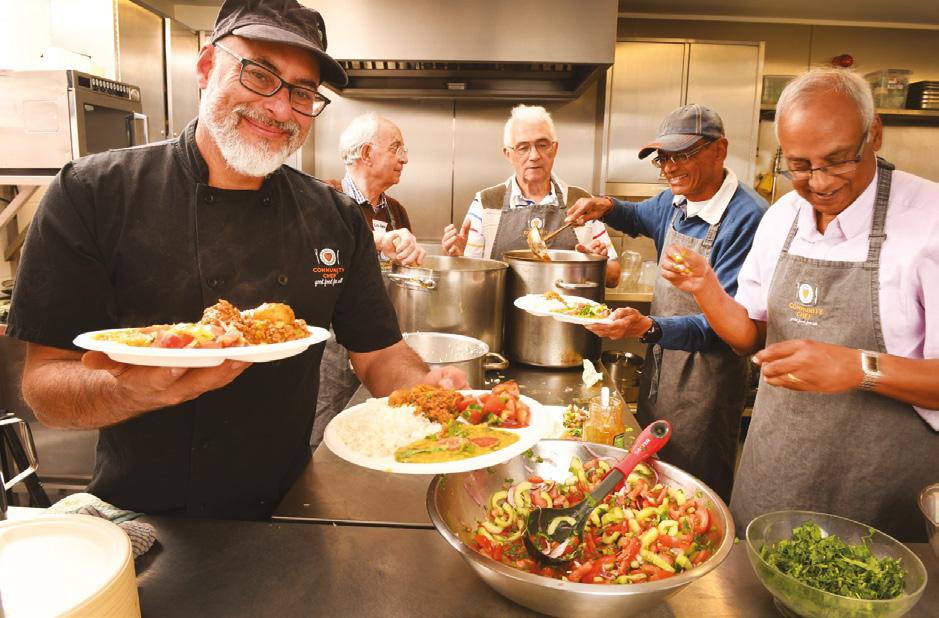
Research suggests that an increase in food bank use is being experienced by disabled individuals, who are more likely to use them in the first place; here at DRM, we decided to deep dive into how to eat well when you’re disabled’.
In November last year, the Trussell Trust published research from the Scottish Centre For Social Research, that showed there had been a sharp increase in disabled individuals using food banks. The report noted that the rate of individuals referred to the food banks of the Trust’s network are 69% disabled individuals. 75% also said that they or a member of their household is also disabled.
Access to food is a must - but so is accessabillty in the kitchen. We spoke to two men who run educative projects around disability in the kitchen:
Robin Van Creveld is the founder and director of Community Chef, a CIC organisation that has always focused on individuals being encouraged to cook healthy food, while campaigning for
an ethical food system for all. Based in Lewes, he has co-created a course called Cooking Beyond The Spectrum; a 5 week programme, it is designed for the parents and carers of Neurodivergent individuals. It is co-led and codesigned by an Autistic individual, with the aim of being person led and Neurodiversity affirming - a first of its kind - with the aim of closing a skills gap left by skewered diagnostic rates. He said: “When it comes to encouraging Neurodiverse people to eat well, there is no one size fits all approach.
“Our aim is to create a nurturing environment for parents and carers to discuss the issues they face and share best practice.
“We will pass on a set of skills and strategies which focus on accentuating
positive behaviour, de escalating stress and getting families cooking together.”
His website is communitychef.org.uk; Van Creveld can often be found at events around the country, and the business regularly goes to teach individuals.
Ian Taverner is also known as Mr Cookfullness; a disabled individual, he is also a cook, presenter, food writer, and author of the book of the same name. His mission is simple - to create a cookfullness revolution through opening up access to food to the disabled community.
When asked about how he goes about adapting his workspace and his tips for other disabled individuals, he said: “For me it is about simple swaps, start with white to brown, so rice, bread and pasta, it really can make a difference.
“Identify the main barriers you facepeeling, chopping, heavy & hot pans, mixing - and get smart equipment to help you - a palm peeler/zester, right angled knives or, my best tip, a steamer!
“No open boiling water, no heavy/hot pans, lots of trays to cook multiple items, don’t lose goodness into the water and a built in timer so nothing over cooks!” He can be found at cookfullness.co.uk, as well as at events such as Naidex.
Ian Taverner also known as Mr Cookfullness, is a food writer and author. Known for his Cookfullness Revolution - to making cooking truly accessible and adaptable, as well as to build confidence and independence for everyone.
Ian Taverner isthe author of the book of the same name. Before becoming a food writer, Ian had a two decade career in financial services; this ended due to declining health. Following a 4 week residential programme at Bath National Centre for Pain Services, Ian began to understand what was happening - and although life was going to be very different, a pathway to a happier life was born. His debut book came as a necssity, owing to being unable to cook or approach the kitchen, due to the multiple barriers to his access.

Give Yourself Time – when you need to take extra time, take a step back, breathe and re-ground yourself
Serves: 6-8 people | Cook Time: 0mins | Preparation time: 25 mins plus 10 mins to allow for the setting of the base & minimum 1 hour to allow for the setting of the top. This would preferably be done overnight;
8 inch round cake tin or mould | 1 roll of greaseproof paper | 1 pair of scissors
1 small mixing bowl (in order to melt butter) | 1 larger mixing bowl
1 Rolling pin | 1 set of weighing scales
1 measuring jug | 2 tablespoons 1 zester | 1 chopping knife | 1 chopping board | 1 whisk | 1 serving plate 1 timer
(Everything that is marked with a * can be swaped for gluten free or vegan alternatives, all of which can be found in a local supermarket)
200g digestive biscuits*
80g melted butter
400g plain cream cheese*
450ml coconut cream
2 tablespoons maple syrup
Zest & juice of 1 lime 250g mini eggs*
1 Line your cake tin or mould with the greaseproof paper, including across the bottom and sides; use your scissors to cut around the edges.
2 In the larger bowl, use the rolling pin (or hands!) to smash up the biscuits; this should be to a crumblike texture. Pour the melted butter over the crumb-like mixture and mix together to combine.
3 Tip the mixture into the lined cake tin; with the back of a spoon, press it firmly into place, to cover the base of the tin or the mould. Make sure it covers the base as evenly as possible. Put into the freezer for 10 minutesset your timer as a reminder.
4 In the large bowl, add the cream cheese, coconut cream, maple syrup. Lime juice and zest all at once. Beat with a spoon into a mix, then whisk it until smooth.
5 Bash all of the Mini eggs in ther bags until they form a crumb like mixture; tip two thirds into the mix you created in step 4. (Keep the rest for decoration.) Combine them into the mix/
6 Remove the base you made in step 3 from the freezer. Carefully pour the mixture from step 5 on to the base.
7 Put the entire cheesecake into the fridge for at least one hour to

harden up, preferably overnight. Then, carefully remove the tin and paper; put the cheesecake on to your serving plate. Arrange the remaining smashed eggs over the top in whatever way you prefer! Cut slices and………….ENJOY! 8 Congratulate yourself and be proud, you made it!
There are different flavours and chocolate varities that you could use, such as when it comes to creating the top of the cheesecake. If you would like to add an additional fiery ‘kick’, try adding in chopped stem ginger to the mix. Other biscuits can also be used for the base, in order to create a different feel or texture.
When you make the mix to sit on top of the base, it can become quite liquid-y very quickly; make sure that your tin lining has no gaps, and is carefully covered by the greaseproof paper.
If you have managed to not eat it beforehand, the cheesecake stays fresh for 2 to 3 days maximum when kept in the fridge. If you struggle with motoskills or pain related conditions, having someone to help transfer the cheescake mix to a large jug, or make it in a large jug to help with pouring over the base, can be helpful.
iIan Taverner, also known as Mr Cookfulness, is available for bespoke cooking shows, workshops, talk & programmes. The Cookfulness Cookbook is available in hard copy & e-book on Amazon / BookshopUK / Waterstones To enquire:
WEB: cookfulness.co.uk
EMAIL: cookfulness@gmail.com
INSTAGRAM: @cookfulness
TWITTER: @cookfulness
FABEBOOK: @cookfulness
YOUTUBE: @cookfulness
The editor of Disability Review Magazine once wrote a book called The Autism Friendly Cookbook. A first of its kind, the book has since been adapted into a course. Lydia Wilkins, tells us all about it.
When it comes to cooking, I am the world’s worst cook; don’t believe me?
It’s possible to disintegrate a Teflon baking tray in just one ‘go’ in your oven - that’s just how bad I am at cooking and baking. But it was a skills gap that was interesting to me - and a problem in need of a solution.
This world is not one built with Autistic individuals in mind whatsoever. We can, we must and we will do better.
I was diagnosed as Autistic in 2015, 2 months shy of my sixteenth birthday; women are generally diagnosed later on in life, however. When you’re diagnosed however, you are only told the ‘what’what makes you Autistic - rather than the ‘how’ of how to cope. This world is not one built with Autistic individuals in mind whatsoever. We can, we must and we will do better.
Following a denial of a Personal Independence Payment claim, partially on the grounds I could “just learn” key skills such as how to cookmaybe I should learn my way out of my own neurology! If that were at all possible!! - this took a universal shape. Others were like me; having been diagnosed later or without provision, they had always struggled with how to cook, as well as their access needs in relation to their sensory profiles. No one had even explained to some individuals they may struggle to decipher if they are hungry or thirsty - yet, hyper-fixating may mean being able to go for hours without any kind of sustenance. That means you become dramatically at risk for conditions such as Sepsis.
Beyond The Spectrum has its name, as we wanted to go literally beyond - in creating an accessible kitchen for all.
I ended up writing my debut book, The Autism Friendly Cookbook. There are 100 recipes, 30 from other Autistic individuals - and the recipes are also reworked to be more accommodating, with a key for dietary and sensory needs. Part one takes



apart the issues of an unaccomadating kitchen space, in detailing how we do better by everyone.
Robin Van Creveled is the director of Community Chef, a CIC based in Lewes; he’d taught me as a guest speaker when I was at secondary school, and we reconnected in between lockdowns. His classes were ‘research’ for the book - and he taught me a lot. But there was also a demand by individuals the organisation had since been in contact with, for a course to address Neurodiverse needs in the kitchen. So an idea was born…
Beyond The Spectrum has its name, as we wanted to go literally beyond - in creating an accessible kitchen for all. It’s a 5 week course designed for parents / careers of Neurodivergent individuals, simply with the intention of creating a chain reaction, to close a skills gap caused by diagnostic ‘spaces’. It’s a person led, Neurodiversity affirming course - making it something of a ‘first’. The content is, in part, taken from the book - and is co lead by an Autistic person, too.
iThe Autism Friendly Cookbook is out now.
Beyond The Spectrum is being piloted in 2 areas in Sussex; for more information, please visit communitychef.org. uk/cookery-courses/
AUTHOR: Lydia Wilkins
WEB: linktr.ee/journo_lydia
TWITTER: @Journo_Lydia
INSTAGRAM: @journo_lydia
After 30 years working in the mobility industry mainly working for Sunrise Medical / Invacare & Ki Mobility in various roles.
Sean decided to take the leap and start his own rehab business after talking to various therapist and Case managers who wanted a more personal one to one service for clients.
Lightweight Mobility & Seating is a Rehab and healthcare equipment provider aiming to be a one stop shop
prides himself on helping client choose the right products “My focus is ensuring a client is matched to the right product and I have teamed up with the industry’s best suppliers to ensure I can offer clients choices in order to get the right fit.”
As is his background, Sean specialises in prescriptive products, working closely with core manufacturers regularly keeping updated with training on their products to ensure he can prescribe products confidently and enabling his customers. for customers and clinicians.
We provide a wide range of equipment including power chairs, manual/ powered wheelchairs, Seating, power add-ons, Ergo Seating & desks. Also, trikes for children & adults as well as offering servicing and repairs.
As Lightweight Mobility’s director and main product specialist, Sean
iSince 1993, we have been been in the healthcare mobility and rehabilitation industry for adults and children in the UK. we offer wide range of Healthcare & Mobility equipment. Tel: 07488367164
WEBSITE: lightweightmobilityandseating.co.uk
FACEBOOK: lightweightmobility

Main distributors
• Dietz Mobility
• Formalign Seating
• Karma Mobility
• Ki Mobility
• Otto Bock
• Spex Seating
• Triride
• Tomcat Trikes
• Permobil
• Quickie




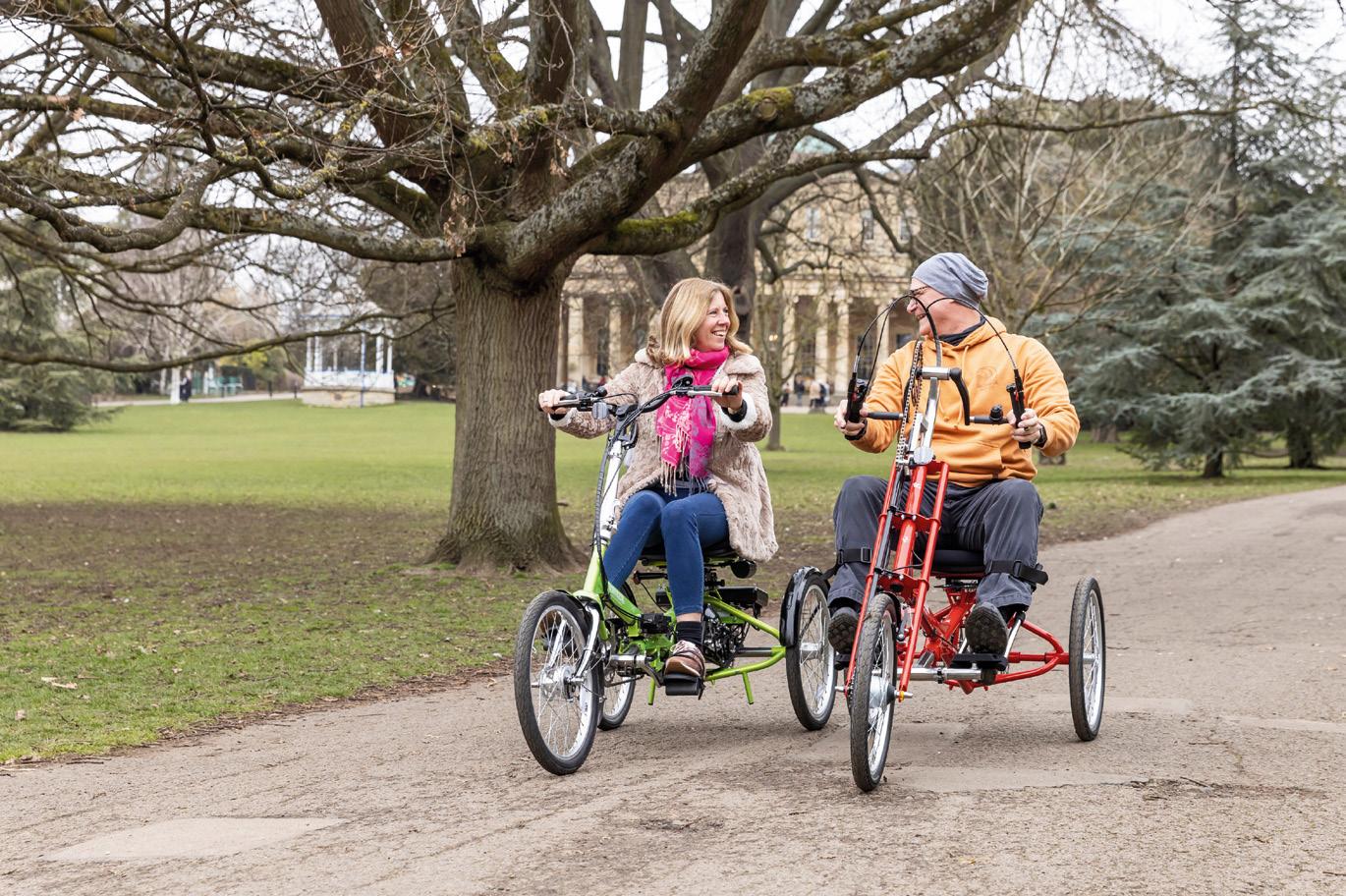

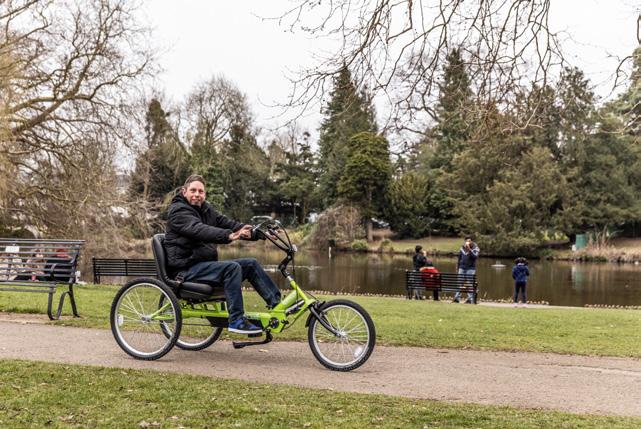



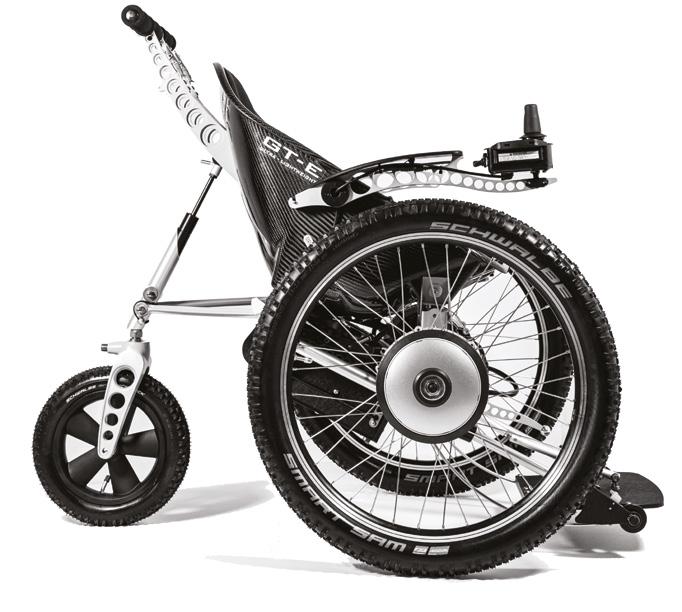
Trekinetic are not like most other wheelchair manufacturers. They believe that wheelchair users deserve the same access to our planet as everyone else and have challenged decades of conventional wheelchair design with their unique threewheel design and carbon fibre seating system. Utilising their previous experience working in Formula 1, Trekinetic have created a manual and powered version of their flagship all-terrain wheelchair that is as practical as it is striking.
and both chairs are versatile enough to use around town, making light work of cobbles and cracked pavements.
TComfortable enough to use every day and capable of handling pretty much any terrain on the planet, Trekinetic wheelchairs are designed for those who refuse to let their disabilities get the better of them.
Thanks to the large front wheels, grass, mud, sand and snow are no longer off limits
rekinetic are not like most other wheelchair manufacturers. They believe that wheelchair users deserve the same access to our planet as everyone else and have challenged decades of conventional wheelchair design with their unique three-wheel design and carbon fibre seating system. Utilising their previous experience working in Formula 1, Trekinetic have created a manual and powered version of their flagship all-terrain wheelchair that is as practical as it is striking.
Comfortable enough to use every day and capable of handling pretty much any terrain on the planet, Trekinetic wheelchairs are designed for those who refuse to let their disabilities get the better of them.
Thanks to the large front wheels, grass, mud, sand and snow are no longer off limits and both chairs are versatile enough to use around town, making light work of cobbles and cracked pavements.
While the carbon fibre seat might look
While the carbon fibre seat might look unusual, it is surprisingly comfortable, with 91% of GTE users giving the chair four or five stars out of five. The patented shock absorber/tilt in space mechanism behind the seat allows you to adjust the weight distribution and pressure loading to get the perfect position, which is particularly useful when going off road.
unusual, it is surprisingly comfortable, with 91% of GTE users giving the chair four or five stars out of five. The patented shock absorber/tilt in space mechanism behind the seat allows you to adjust the weight distribution and pressure loading to get the perfect position, which is particularly useful when going off road.
At 15kg and 34kg, respectively for the K2 and GTE, they are both incredibly lightweight and have been designed to fold down and fit into a regular sized car. The team at Trekinetic have even designed a way to change the camber (angle) of the wheels by turning a bar under the seat. This means the wheelbase can be increased for better stability off road, while at the narrowest setting it’s perfectly capable of fitting through all but the narrowest of doorways. Clever stuff indeed.
With a wide array of customisations available, including a folding upper leg support for amputees, Trekinetic are proving to be the go-to manufacturer for those with a love for the outdoors.
Web: trekinetic.com
At 15kg and 34kg, respectively for the K2 and GTE, they are both incredibly lightweight and have been designed to fold down and fit into a regular sized car. The team at Trekinetic have even designed a way to change the camber (angle) of the wheels by turning a bar under the seat. This means the wheelbase can be increased for better stability off road, while at the narrowest setting it’s perfectly capable of fitting through all but the narrowest of doorways. Clever stuff indeed.
Email: info@trekinetic.com
Phone: 01442 252 700
Social: @trekinetic
With a wide array of customisations available, including a folding upper leg support for amputees, Trekinetic are proving to be the go-to manufacturer for those with a love for the outdoors.

“I have been a right leg, above-knee amputee since 2007. I have never got on with my prosthetic and didn’t feel like it was an option. Using crutches is fine for short distances but for anything more, I need a chair. I remember the first time I saw a Trekinetic chair. It was bright yellow and the girl in it zoomed past me in my conventional wheelchair. From there I purchased my first Trekinetic chair, a K2 in pink!
“I have been a right leg, above-knee amputee since 2007. I have never got on with my prosthetic and didn’t feel like it was an option. Using crutches is fine for short distances but for anything more, I need a chair. I remember the first time I saw a Trekinetic chair. It was bright yellow and the girl in it zoomed past me in my conventional wheelchair. From there I purchased my first Trekinetic chair, a K2 in pink!
“I’ve always loved to travel and getting the first chair was amazing. I was able to get to places I never would have considered before. It opened a whole new world to me! From the snowy tundras of Finland, to the beaches and rainforest of Costa Rica and the Acropolis hill in Athens, with the occasional helping hand, there was no stopping me.
“I’ve always loved to travel and getting the first chair was amazing. I was able to get to places I never would have considered before. It opened a whole new world to me! From the snowy tundras of Finland, to the beaches and rainforest of Costa Rica and the Acropolis hill in Athens, with the occasional helping hand, there was no stopping me.
“Unfortunately, I had a fall in December 2018, which damaged my shoulder and made it almost impossible for me to use a manual chair. I made the decision to upgrade to an electric version (GTE Mk ll). I picked the chair up just a day before I was due to fly out on my six-week round-the-world honeymoon!
“Unfortunately, I had a fall in December 2018, which damaged my shoulder and made it almost impossible for me to use a manual chair. I made the decision to upgrade to an electric version (GTE Mk ll). I picked the chair up just a day before I was due to fly out on my six-week round-the-world honeymoon!
“It’s not just the chair which is top notch: the service and support from the team has been amazing, and they are always so willing to help.
“It’s not just the chair which is top notch: the service and support from the team has been amazing, and they are always so willing to help.
“I can honestly say my chairs have been the best purchases I have ever made. They’ve given me my independence back, and let me experience things I couldn’t before, such as holding my husband’s hand as we walk down the street.”
“I can honestly say my chairs have been the best purchases I have ever made. They’ve given me my independence back, and let me experience things I couldn’t before, such as holding my husband’s hand as we walk down the street.”
For more, head to trekinetic. com. To learn more about Imogen’s adventures see @three wheelingadventures on Instagram.
iFor more, head to trekinetic.com To learn more about Imogen’s adventures see @three wheelingadventures on Instagram.










Sale of daily living aids, mobility aids, mobility scooters and powerchairs, vehicle adaptations, riser recliners, incontinence items, stairlifts and wheelchairs.
We do all of the Stage 2 conversions for the Motability Wheelchair Accessible Vehicles (WAV’s)
Battery checks and fitting
Installing vehicle adaptations including, Steering wheel aids, Hand controls, Twin Flip left foot accelerators, Right hand brake and accelerators, 40Kg, 80Kg, 120Kg Boot hoists, Transfer plates, Docking systems and pedal extensions.
Scooter and powerchair servicing and repairs
mobilitycaresolutions.com
The latest addition to Ty Gwyn Special School may look like a normal school building, but it is packed with interesting features and was delivered using modern methods of construction.
The latest addition to Ty Gwyn Special School may look like a normal school building, but it is packed with interesting features and was delivered using modern methods of construction.
The building was delivered by modular building specialist Wernick and was constructed using 18 individual modules which were manufactured in dedicated factory in Port Talbot, less than an hour away from the site. These were transported to site by lorry, then craned into position and bolted together to form the core of the building. The brick cladding and trussed roof were then added to the core to give a traditional construction appearance.
Manufacturing the building in a factory environment gave the project several advantages. Firstly, the building could be constructed at the same time as the foundations were being prepared, dramatically reducing programme length, particularly on site. Manufacture was also not affected by site conditions like the weather, making the programme even more reliable. This was vitally important for the school, who would need the building in time for the start of the new term.
Providing a robust building which would be both a safe and calming environment for Ty Gwyn’s pupils who can sometimes present challenging behaviour, was important. This was reflected in the enhanced specification required by the council which Wernick embraced fully, enhancing their standard modular system to meet the requirements.
The painted internal walls were upgraded with impact-resistant plasterboard to better withstand the demanding classroom environment.
The floor, apart from being fully non-combustible, was also enhanced to improve rigidity and acoustic performance. All the doors are also equipped with acoustic seals to reduce noise throughout the building and ALUMASC Safehinge anti finger trap system to avoid any opportunity for entrapment.
Acoustic performance was especially
Acoustic performance was especially important for the withdrawal rooms off each classroom.
important for the withdrawal rooms off each classroom. These spaces can be used when a child needs a calming and safe environment. The walls and floor of these were padded to ensure child safety, and were also equipped with an observation window and AV system, allowing teachers to play music for the children from the main classroom. A ducted heat recovery system was employed in the ventilation in these rooms, and comfort cooling is used throughout the building.
The audio-visual system in the block is also a step above many standard classroom buildings. Aside from the withdrawal rooms and interactive whiteboards in each class, there is also a dedicated sensory room with controllable coloured lighting and interactive projections on the floor and wall which pupils can engage with.
All classrooms are also equipped with a DDA compliant toilet and shower room, as well as a ‘nurse call’ system to help staff in emergencies. Glazing throughout the building was also enhanced to reduce u-values and improve security by meeting Secured by Design standards. As standard the windows had toughened glazing inner and laminate glazing outer.
A spokesperson for Cardiff Council commented:
“The Wernick team were excellent to work with from start to finish. Teamwork was at the heart of everything, and the team committed from the outset to deliver the project on time. Working relationships were excellent, and this facilitated first class communication and ultimately the delivery of a highly successful project”
WEB: Wernick.co.uk
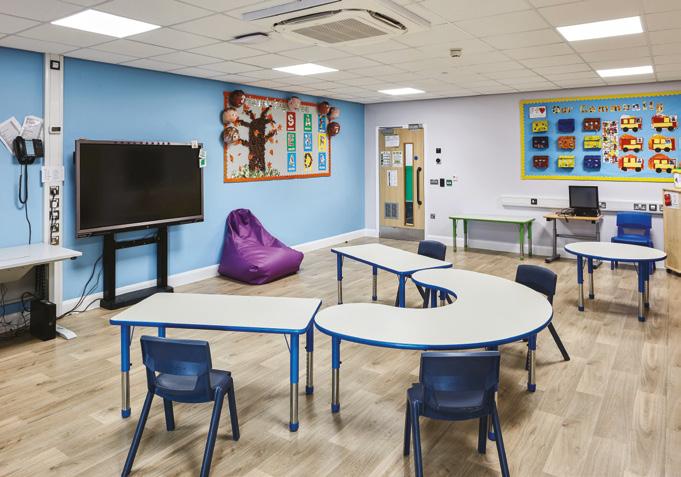
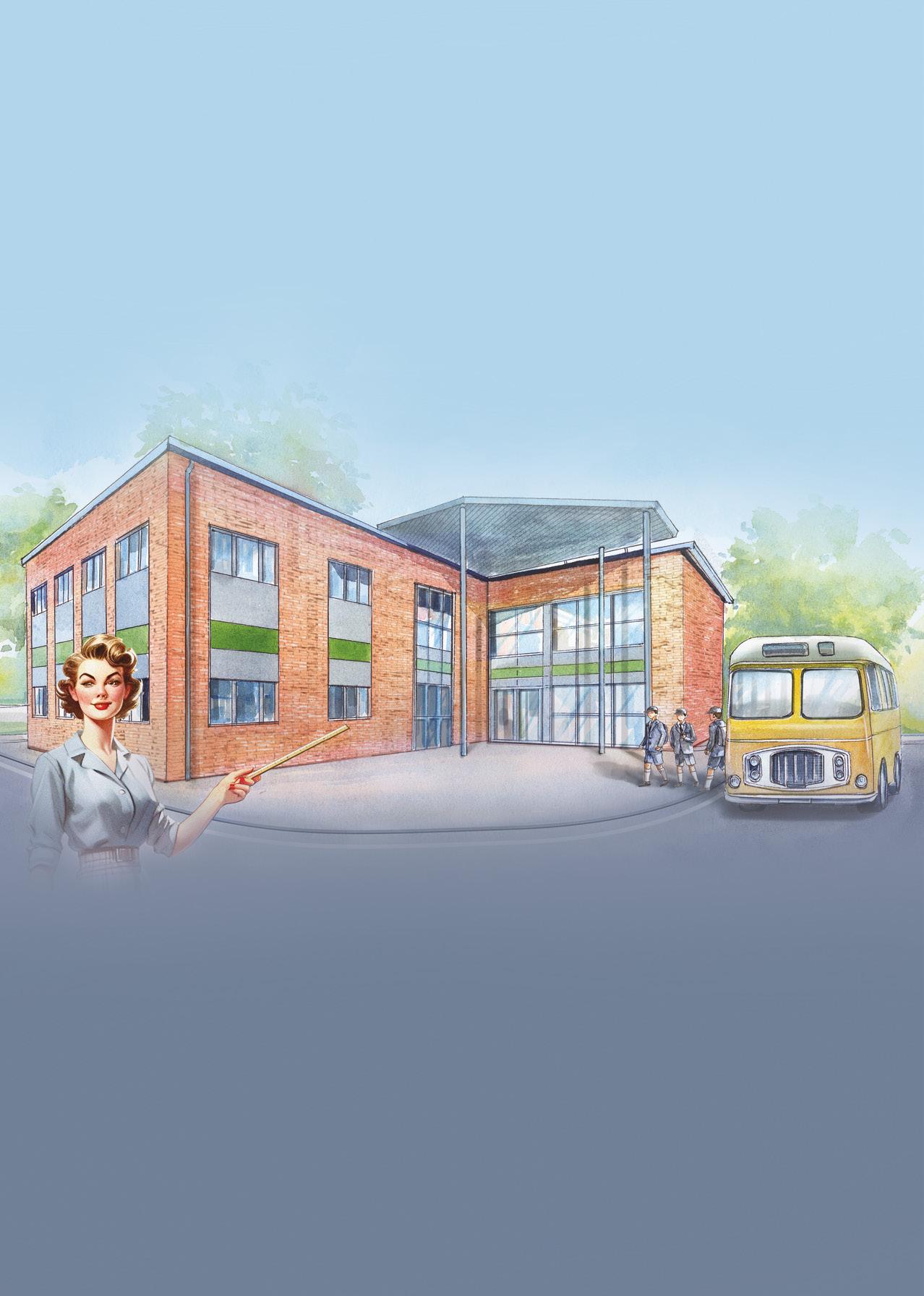

Aerobility is a UK based, registered charity. Founded in 1993, we change lives by providing the disabled community access to the magic and wonder of flight.
Ifeel lighter, brighter and excited for the future. I finally have my life back.” said 54 year old Amy, who is learning to fly with Aerobility.
Aerobility is a charity which changes lives by allowing anyone, with any disability, to experience the magic and wonder of flight. The organisation provides access to modified light aircraft and equipment, giving every disabled person the unique chance to spread their wings.
Amy is diagnosed with generalised osteoarthritis and degenerative disc disease, both of which have had a profound impact on her mobility and daily life. Despite previously believing she would never fly an aeroplane, Amy booked an experience flight with Aerobility after discovering the charity at a disability exhibition last April. Since then, Amy has been awarded a flying scholarship with Aerobility and is now working towards earning her Private Pilot Licence.
Amy said: “Aerobility has changed my life for the better, massively. I have a purpose and something to live for, which is something I had lost for a very long time.”
Mike Miller-Smith is the CEO of Aerobility. He said: “For over 30 years, we have been working hard to provide multiple ways for people with disabilities to engage in the aviation world. Many members of the team here at Aerobility, including myself, have a disability, meaning we understand first-hand the transformative power that flying can have.”
Since its establishment in 1993, Aerobility has introduced more than 10,000 disabled people to flight, changing their perspectives on their lives and personal capabilities. The charity is
a representative body for disabled aviation within the UK and advocates for disabled people within the aviation industry and beyond.
Aerobility offers a wide range of incredible flying related activities for people with disabilities. These include group flying days, accessible aerobatics, experience flights, and flight training.
As well as opportunities in the air, the charity also runs ground based programmes and courses, such as the revolutionary Virtual Aviation Experience (VAE) which launched last year with support from the UK Government.
VAE is a free course designed for anyone living with a disability who is 12 years of age and over. It opens up the world of aviation to a community of people that might previously have felt it was beyond their capability.
Participants receive three one-hour sessions with an instructor which can be completed from the comfort of their own home using their own computer using GeoFS. GeoFS is an accessibility web based flight simulator, built to bring aviation to everyone. Flyers will be able to make decisions, manage a workload and practice coordination so they develop their situational awareness and interact with others.
Mike Miller-Smith continued:
“Aerobility offers a wide range of opportunities for people with disabilities to experience within aviation. One of our newest and most exciting programmes is the Virtual Aviation Experience (VAE). VAE is designed for people with disabilities to complete from home and therefore is one of our most accessible courses. It can be the beginning of a new hobby or kick start the journey to further education and an exciting career.”
Geoff Spink, a recent VAE participant, said: “I was in the hands of a really experienced instructor: a former commercial pilot, who was able to answer all of my questions about flying. He was supportive and inspirational. The course left me feeling that nothing was impossible.”
iBeginning your journey with Aerobility is easysimply visit the website aerobility.com to find out more, or pick up the phone and chat with our front desk on 0303 303 1230. “You have nothing to lose and absolutely everything to gain.” said Aerobility flyer Ann-Marie.



























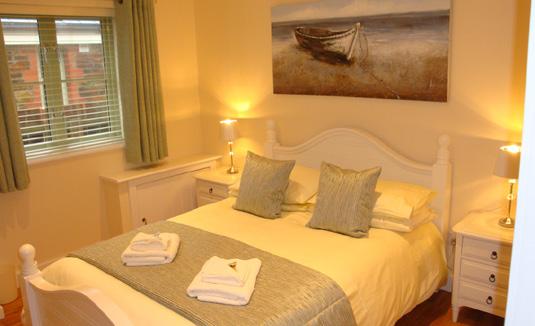

Cornish Accessible Holiday Cottages, now has 3 purpose built wheelchair friendly cottages, Hazel, Willow & Elm.
All Cottages offer the ideal self-catering location; close by one of the most beautiful coastal areas in Cornwall. The cottages have been specifically designed to accommodate families, friends and the less mobile. Guests can now hire a full profile bed for their stay in both Hazel and Willow cottages. Also Hazel cottage now has a riser recliner chair to aid guests independence & comfort.

www.cornishaccessibleholidaycottages.co.uk
All enquiries please contact Phil & April Cooke.
Cornish Accessible Holiday Cottages, Tregony, Truro, Cornwall. TR2 5SH
Telephone: 01872 530520
Email: info@cornishaccessibleholidaycottages.co.uk

THE No.1 SEATING SOLUTION FOR PAEDIATRIC POSTURE MANAGEMENT
The Snooza Chair is your super light, fun, comfortable and calming solution that keeps the user safely in a mid line position.
Used by those affected by: Autism, Epilepsy, Cerebral Palsy, Achondroplasia and Neurological conditions to name a few.

By Ophir Solutions Ltd
For product, dealer and assessment details please email: sales@ophirsolutions.co.uk

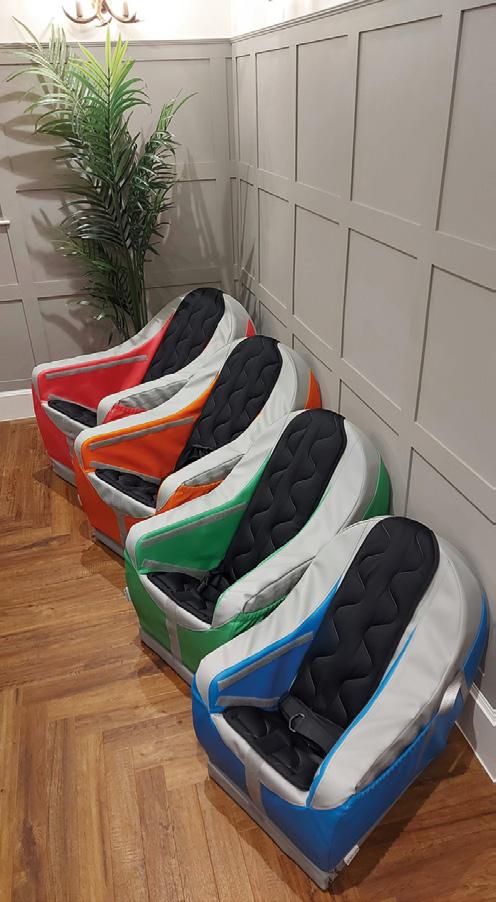



Mountain Trike specialise in all-terrain wheelchairs that empowers the user.
If you struggle with mobility and need the use of a wheelchair either full time or some of the time, getting out can feel prohibited and pretty daunting. Generally, everyday wheelchairs are not off-road capable and this is something that inventor of the Mountain Trike all terrain wheelchair recognised so set about designing and manufacturing an all terrain wheelchair.
With 5 models now available in the range which include a recent collaboration for a fully electric joystick model, the Mountain Trike Company are
leading the way in outdoor all terrain wheelchairs.

The innovation for the Mountain Trike and eTrike models come from the lever drive system which is how the driving, steering and braking is controlled. Using the lever drive system either manually or with electric assist the rider has complete independent control and means the wheel frames never have to be touched - no-one wants dirty, cold, wet hands when going off-road!
If you are unable to propel the MT Push range is controlled via the push handle located behind the rider and is very popular with families.
For comfort and safety all models





come with air suspension, hydraulic brakes and comfortable adjustable seating with safety straps. And if you’re worried about style you can pretty much choose any colour for your frame and a number of adaptable accessories are available so you can style to your preference. The outdoors is waiting to be explored!


•
•
•


































